- Grunty diesel engine
- Practical interior
- Off-road credentials
- Poor value equation
- Agricultural handling
- Poor warranty and service package
Ute sales in Australia have gone from strength to strength in recent years, so to have ute based SUVs. By turning the ute tray into a boot with a third row of seats, the usefulness of the ute form factor is expanded for families. This class of SUVs are far more affordable than large off-road vehicles such as the LandCruiser, Prado and Patrol offering adventurous families a more obtainable transport option, with more desirable attributes than offered in many utes. Enter the 2022 Toyota Fortuner Crusade which offers dual-cab ute capability with the functionality of an SUV.
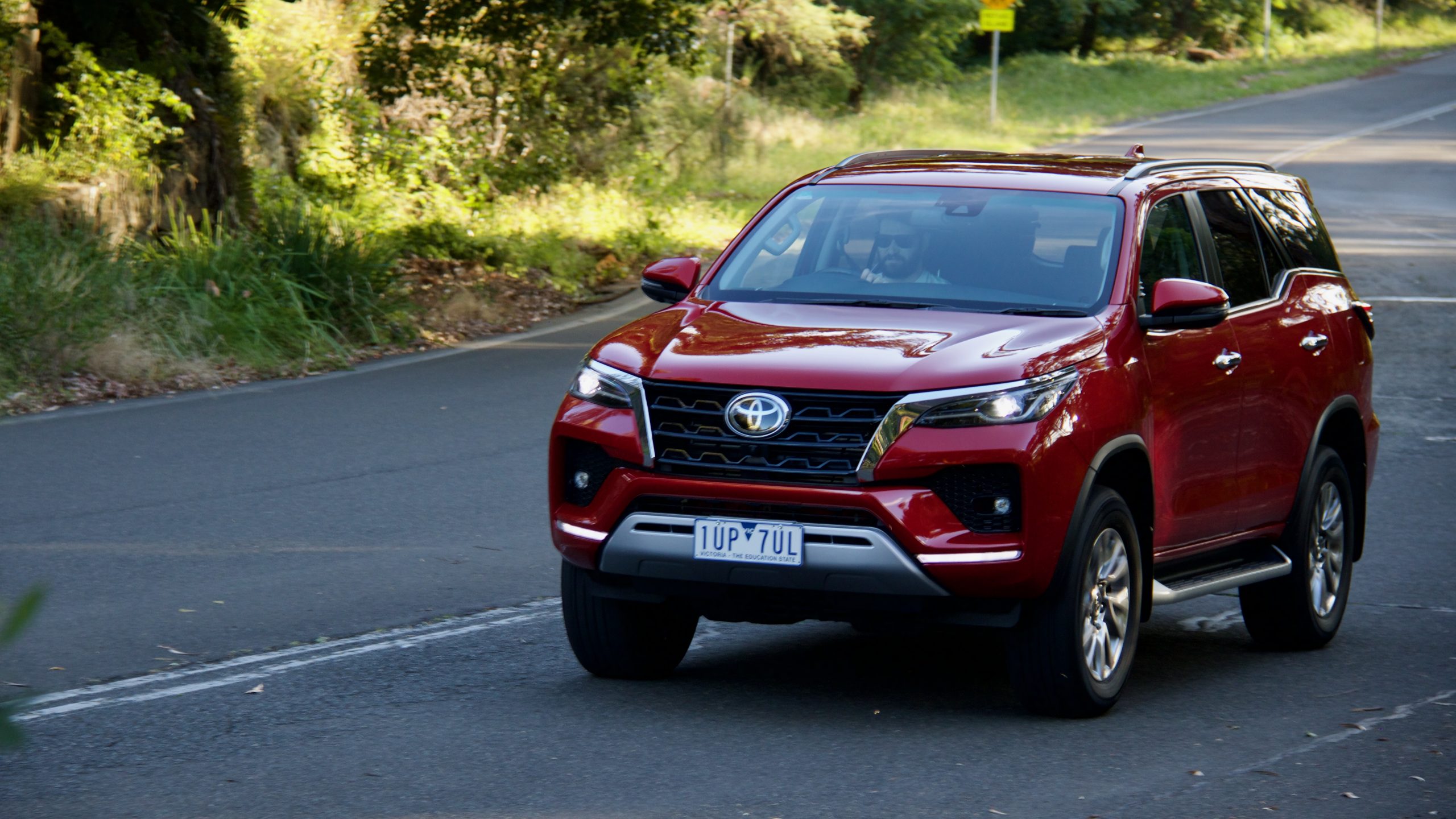
Toyota’s offering in the the ute based SUV segment is the Fortuner, which launched in Australia back in 2015. Toyota has given the Fortuner updates over the years in order to keep it fresh, but with challenges mounting from competitors which have been redesigned from the ground up, how does the Fortuner fare in 2022? Read on to see our thoughts after spending a week behind the wheel.
Price & Equipment: 6/10
The Australian Fortuner range comprises three models: Base GX, mid-range GXL and the top spec Crusade, which we tested here. Pricing for the range starts at $49,965 plus on-road costs (around $54,600 drive-away) and tops out at $62,945 + ORC (around $69,000 drive-away) for our test car – a Crusade with premium paint.
The 2022 Toyota Fortuner Crusade is equipped with 18 inch alloy wheels, a full sized alloy spare, automatic LED headlights with LED daytime running lights and fog lights, roof rails, side steps, leather accented seats with eight ways of power adjustment for the driver seat and one-stage heating for the driver and passenger seats, dual zone climate control with vents and fan control for the second and third rows, a front cooler box, auto up/down power windows all around, a power tailgate, electric-folding mirrors, an auto-dimming rear view mirror, keyless entry and start, paddle gear shifters, a 4.2-inch driver’s information display, an 8.0-inch touchscreen infotainment system featuring wired Apple CarPlay and Android Auto, satellite navigation, digital radio and an eleven speaker JBL speaker system, a 240 volt socket, three 12V sockets and one USB-A port.
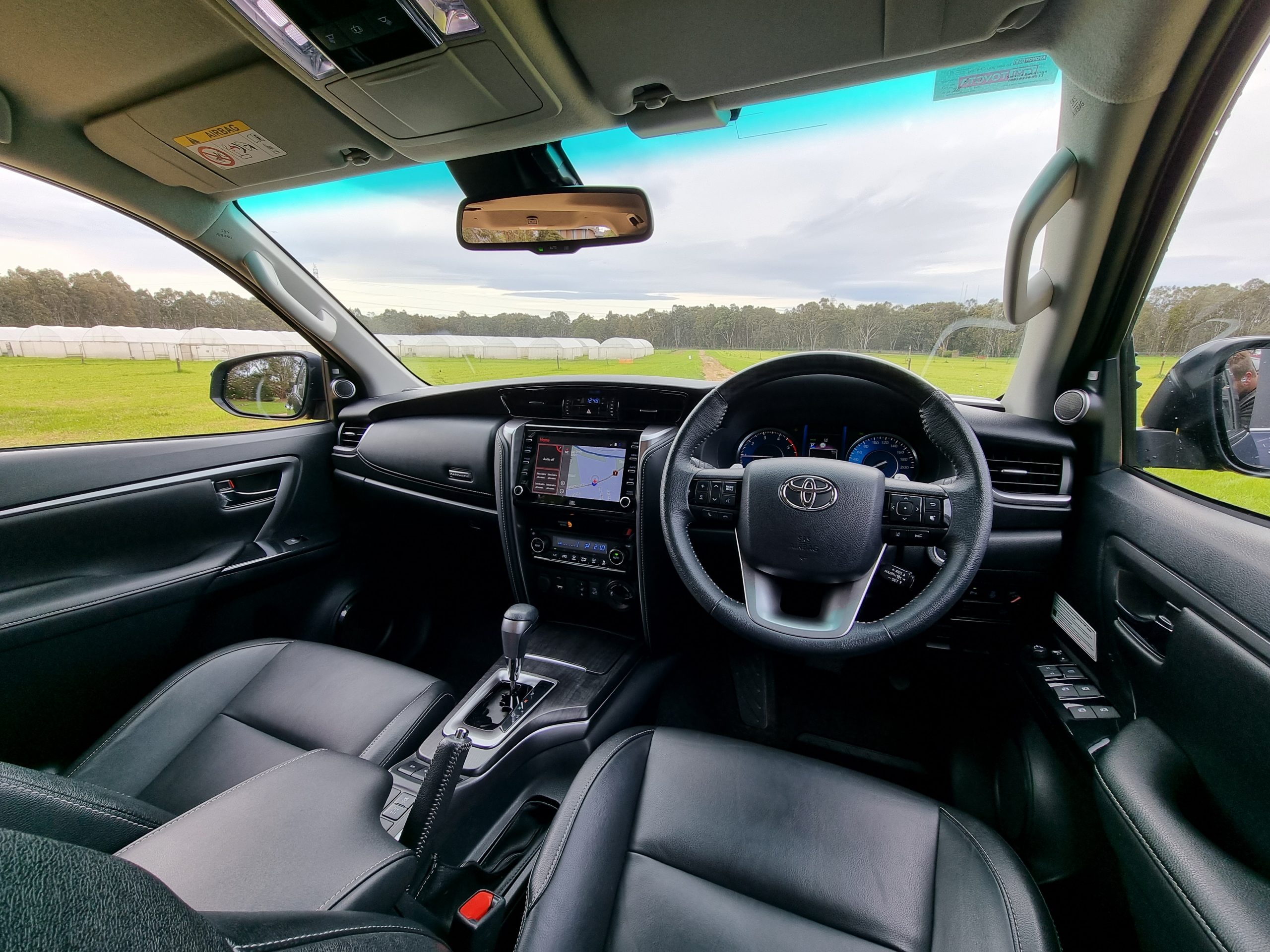
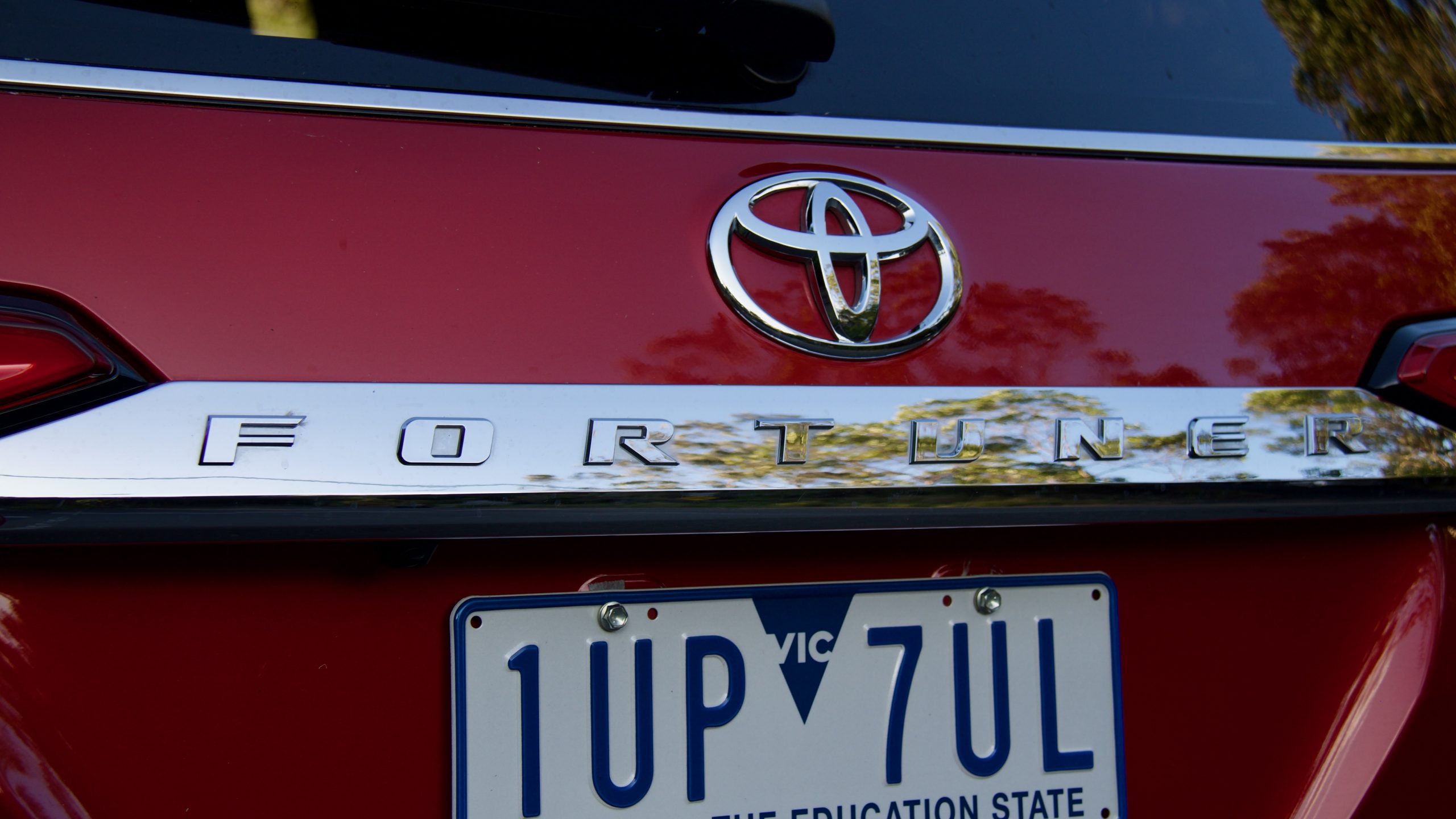
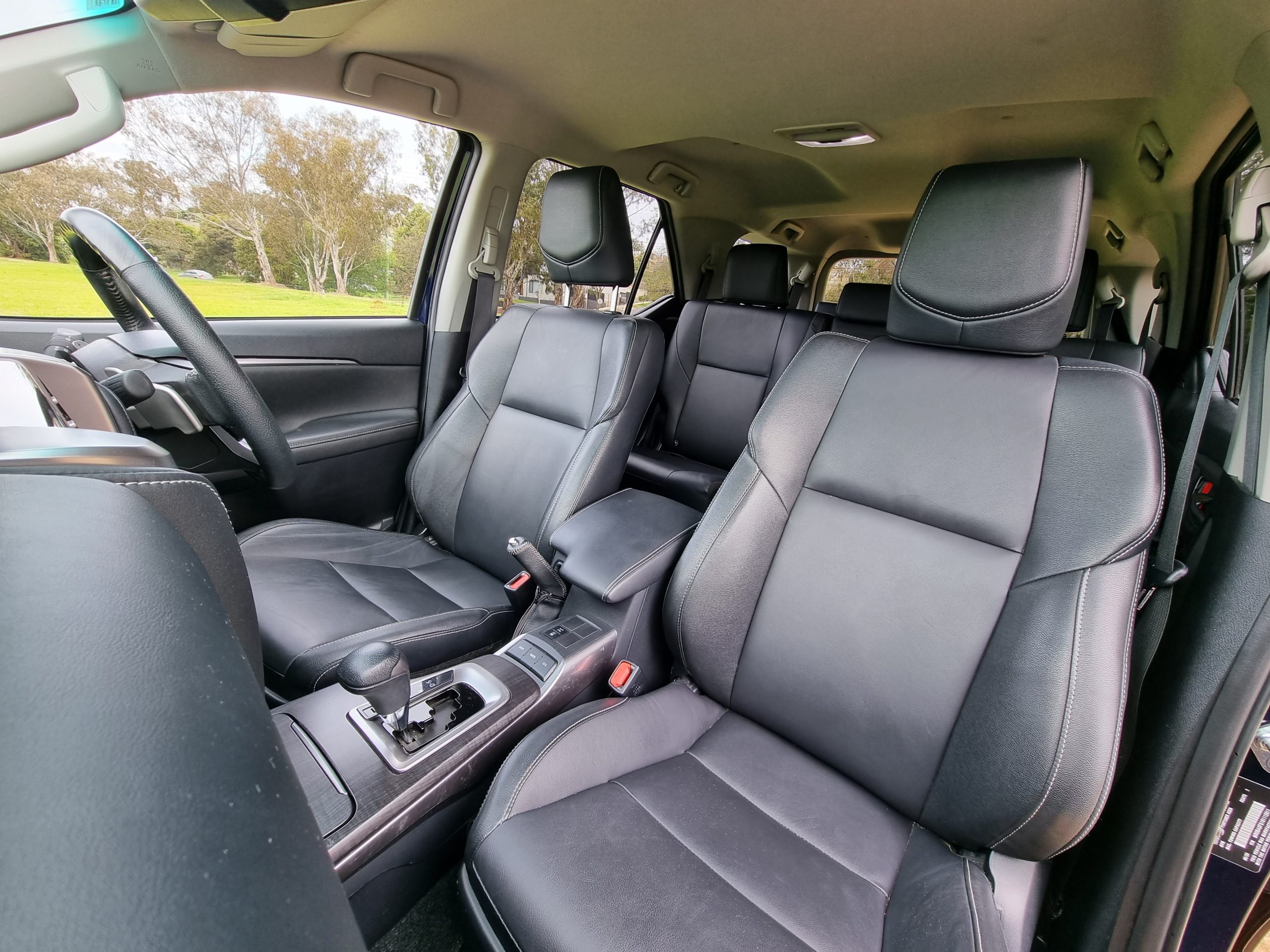
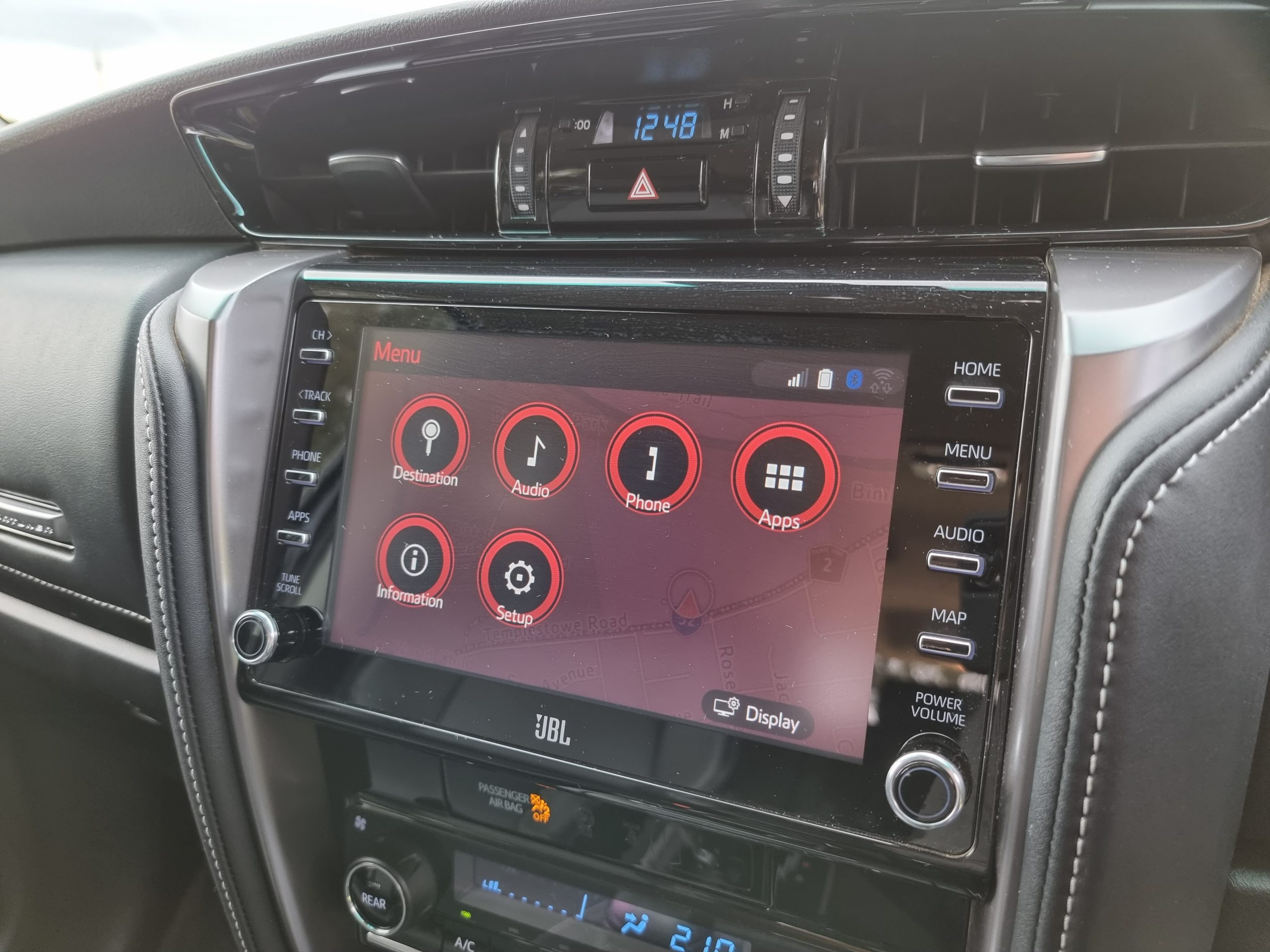
The Fortuner was crash tested by ANCAP in 2019 and received a five-star rating, achieved through the following safety features: seven airbags (Dual front, dual side, driver knee and curtain airbags to all three rows), road sign recognition, adaptive cruise control (high speed only), lane departure warning, blind-spot monitoring with rear cross traffic alert, autonomous emergency braking (AEB), front and rear parking sensors and a 360-degree camera with fixed guidelines, Trailer Sway Control and Toyota Connected Services offering stolen vehicle tracking, automatic collision notification and SOS calling.
The only options available for the 2022 Fortuner Crusade are for the paint and interior trim. Colours available for the Fortuner include the sole non-cost option of ‘Glacier White’ – premium paint is a $710 additional cost and includes ‘Frosted White’, ‘Silver Sky, ‘Graphite’, ‘Eclipse Black’, ‘Phantom Black’, ‘Saturn Blue’ and ‘Feverish Red’ which our test car was painted in. Two leather interior trims are available, both at no cost – tan and our test car’s black.
There are several competitors to the Fortuner – we selected the Isuzu MU-X 4×4 LS-T which is priced at $67,400 + ORC (around $66,000 drive-away) and the Ford Everest Trend 4WD which retails for $65,290 + ORC (around $71,700 drive-away) – the Fortuner sits in the middle of the two.
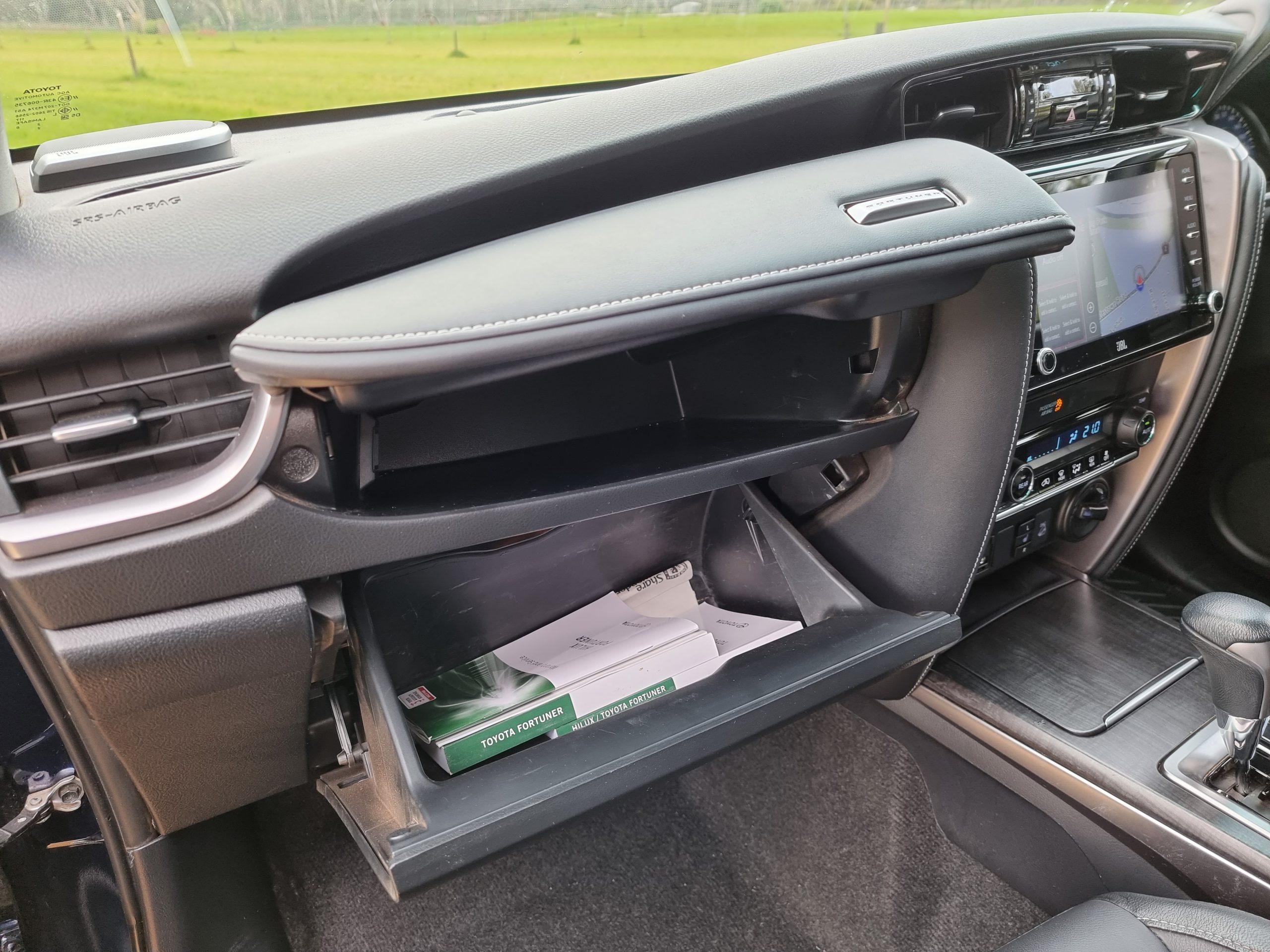
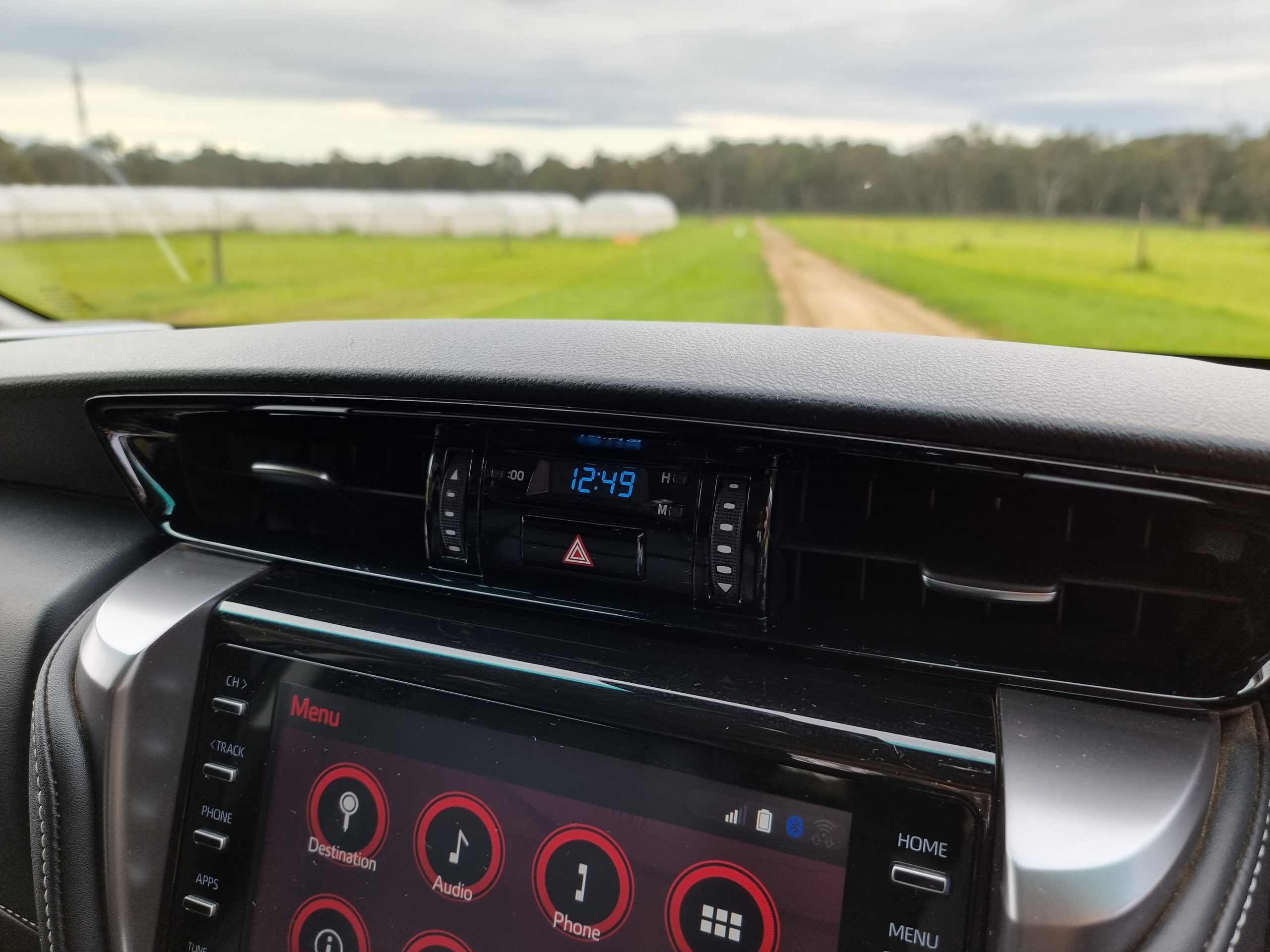
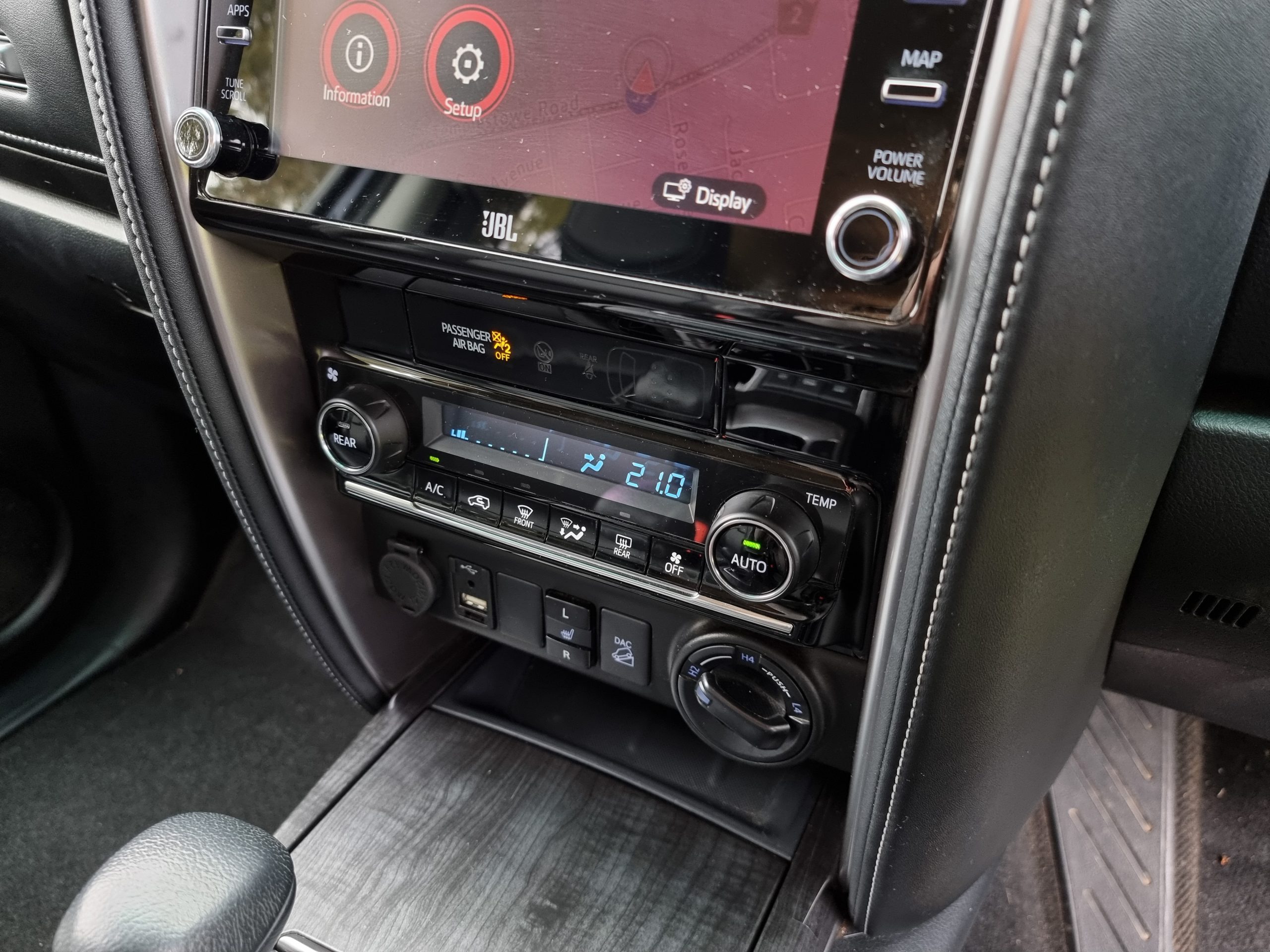
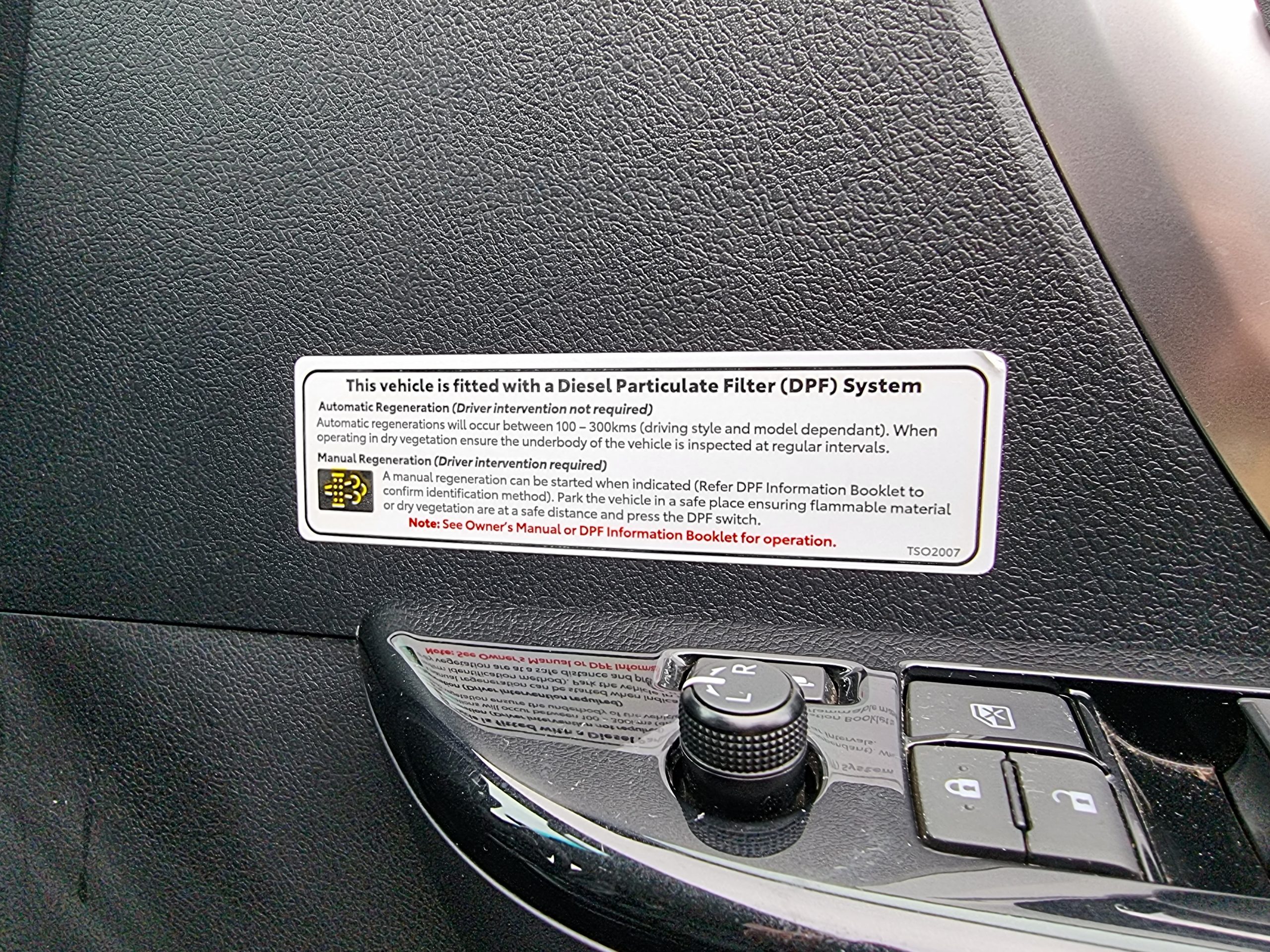
In terms of equipment, both competitors feature a lot more equipment than the 2022 Toyota Fortuner Crusade. Compared to the Everest, while the Toyota does feature a leather third row, seat heating for the front row, a cover box, a 240 volt outlet, an extra three speakers in the stereo system and a panoramic view monitor, the Everest fights back with heated and auto-retracting mirrors, zone lighting, an electric parking brake with auto-hold, a wireless charger, rain sensing wipers, a larger 8.0-inch driver’s information display/instrument cluster, an additional four USB charing points (only one in the Fortuner), an additional two airbags, remote start and other FordPass app features, automatic high beam, a 400kg greater braked towing capacity (3500kg vs 3100kg on the Fortuner), a 12.0-inch touchscreen (8.0-inch in the Fortuner), an alarm, stop and go for the adaptive cruise control system (high speed only on the Fortuner), lane keep and centre assist, post-impact braking, intersection turn assistance, reverse brake assist and evasive steer assist.
The Isuzu MU-X also features a substantial amount of equipment missing on the Fortuner, with multi stage heated front seats, an additional three USB charging points, heated mirrors, remote start, ambient door lighting, a larger 9.0-inch infotainment touchscreen, automatic wipers, wireless Apple CarPlay, hands-free tailgate, larger 20-inch alloys, a 400kg greater braked towing capacity (3500kg vs 3100kg on the Fortuner), intersection turn assistance, post impact braking, a miss-acceleration mitigation system, stop and go for the adaptive cruise control, lane keep and departure prevention assistance, driver attention monitoring, a centre airbag, an alarm, tyre-pressure monitoring and automatic high beam. The Fortuner counters with auto up/down power windows all-around (driver window only on the MU-X), a front cooler box, an additional four ways of powered adjustment for the passenger seat, an additional two speakers for the sound system, a 240 volt socket, an extra 12 volt socket, paddle shifters, Toyota connected services with collision notification, stolen vehicle tracking and emergency SOS and a 360-degree parking camera.
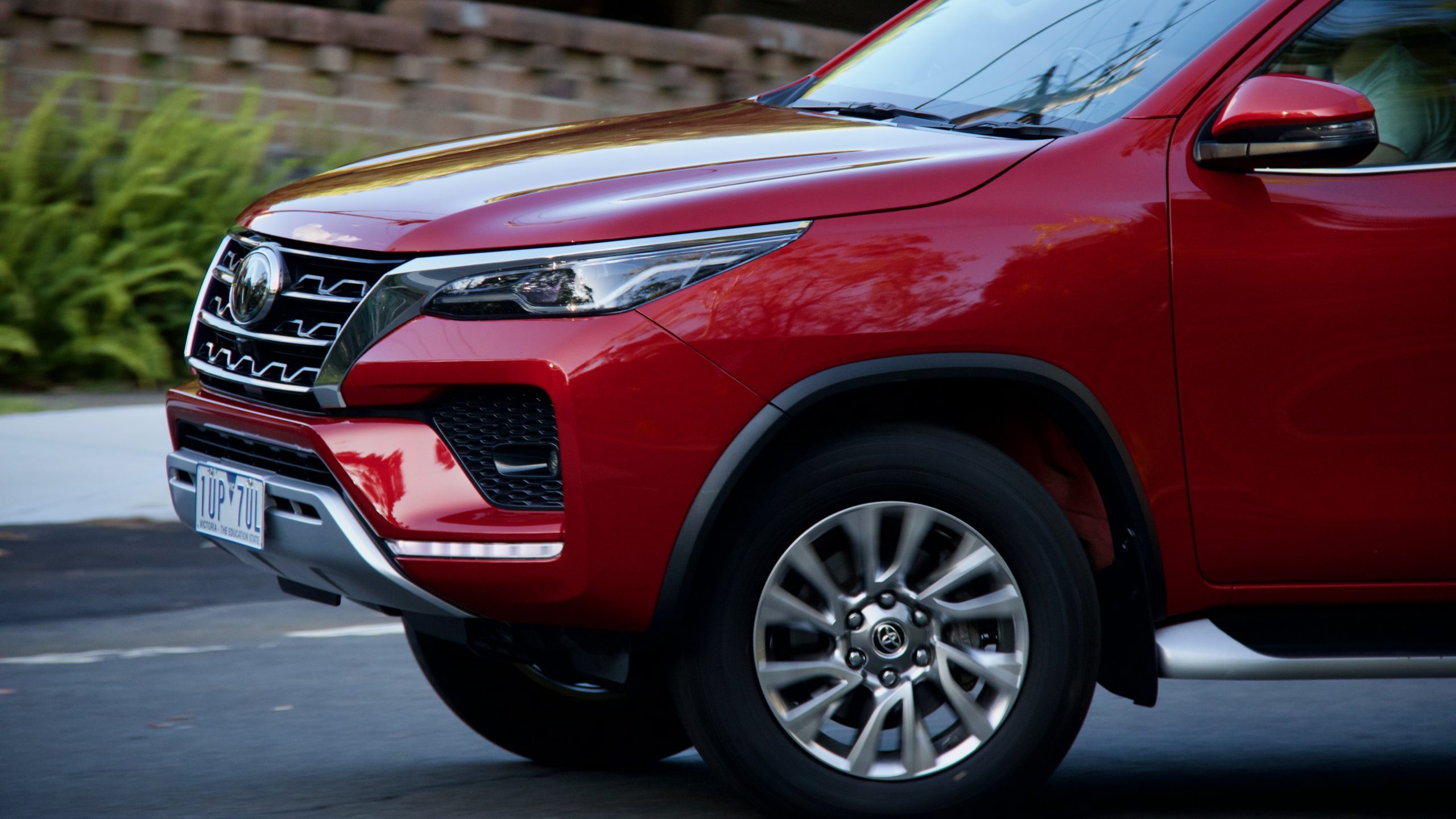
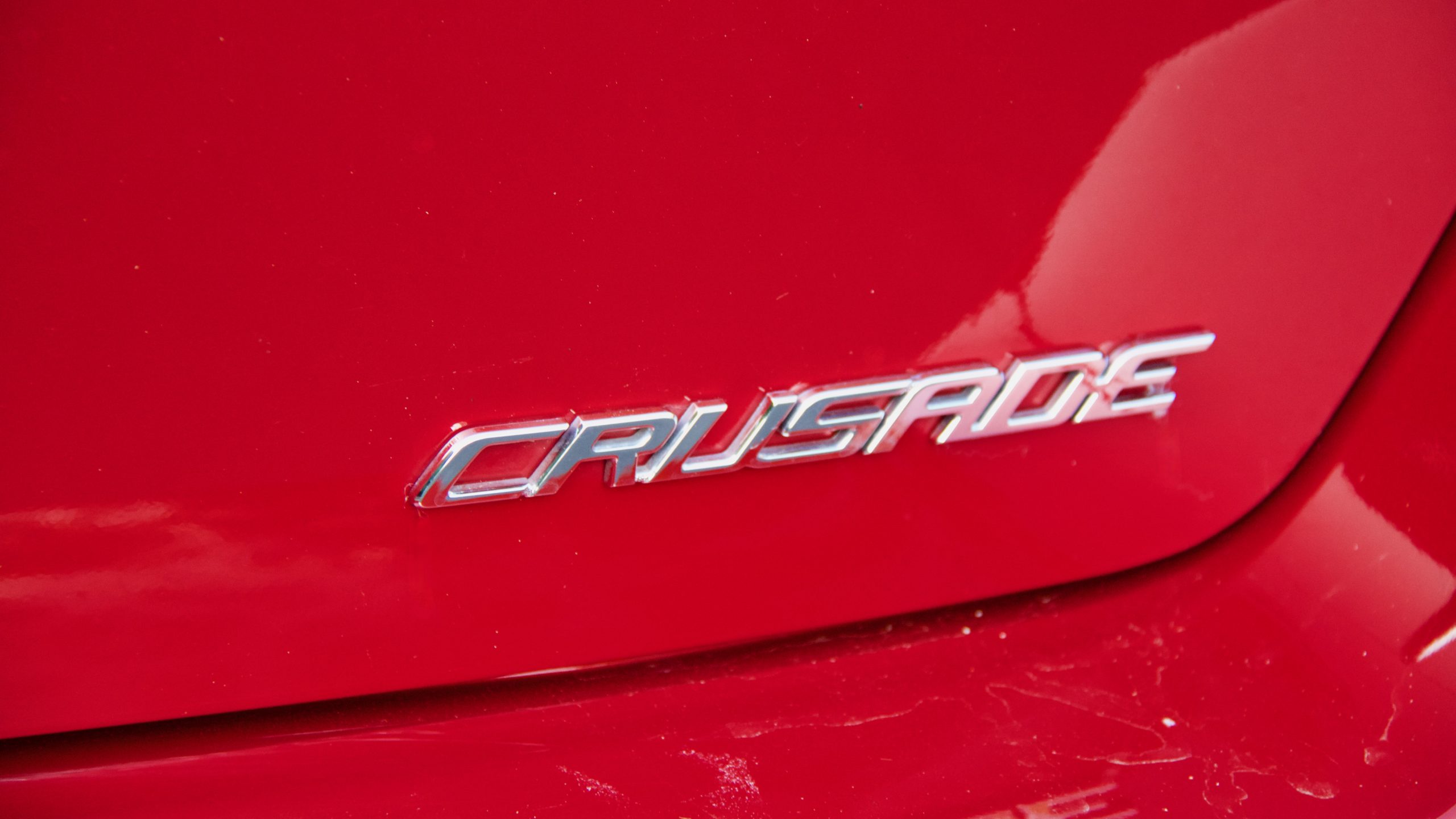
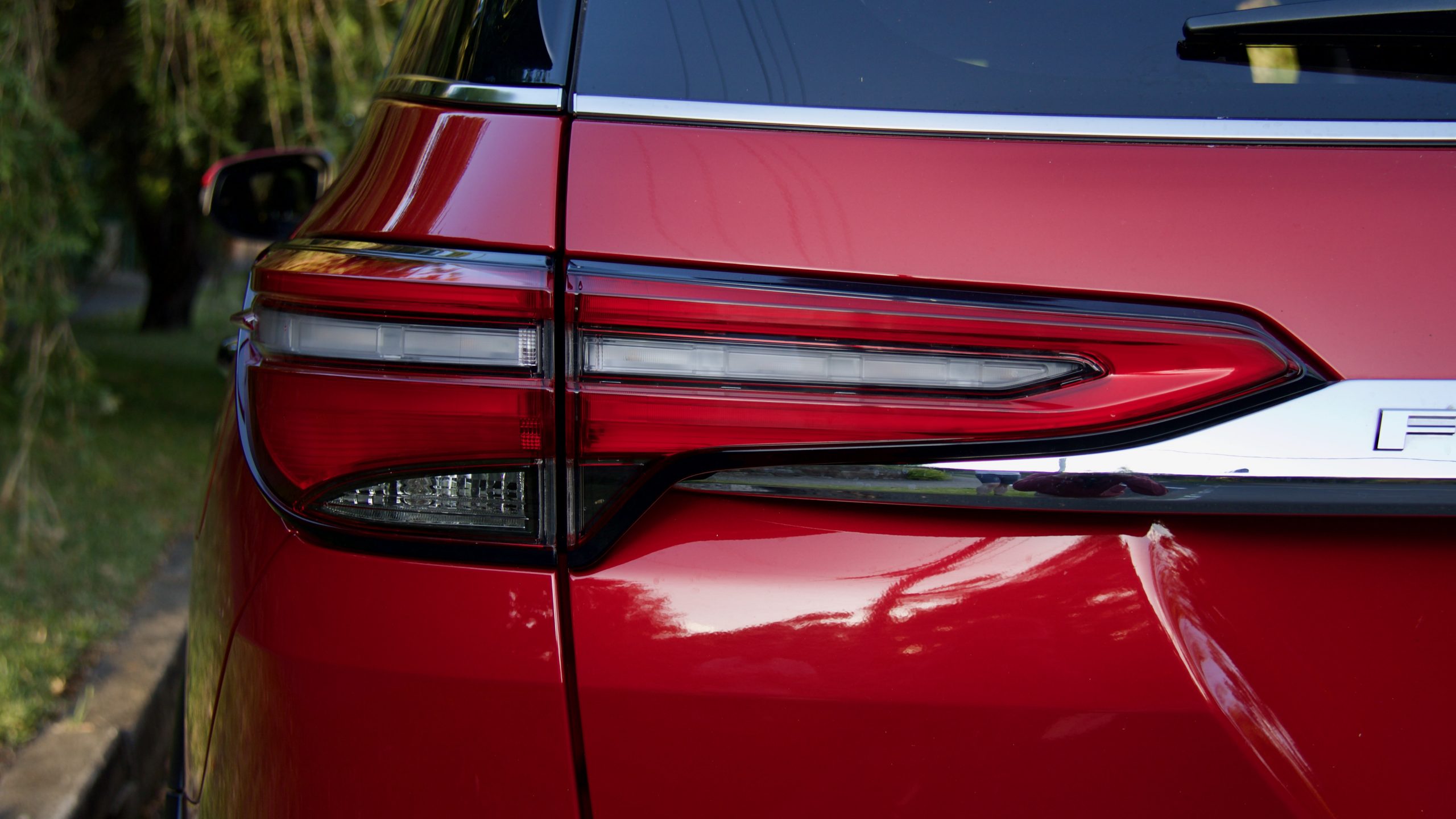
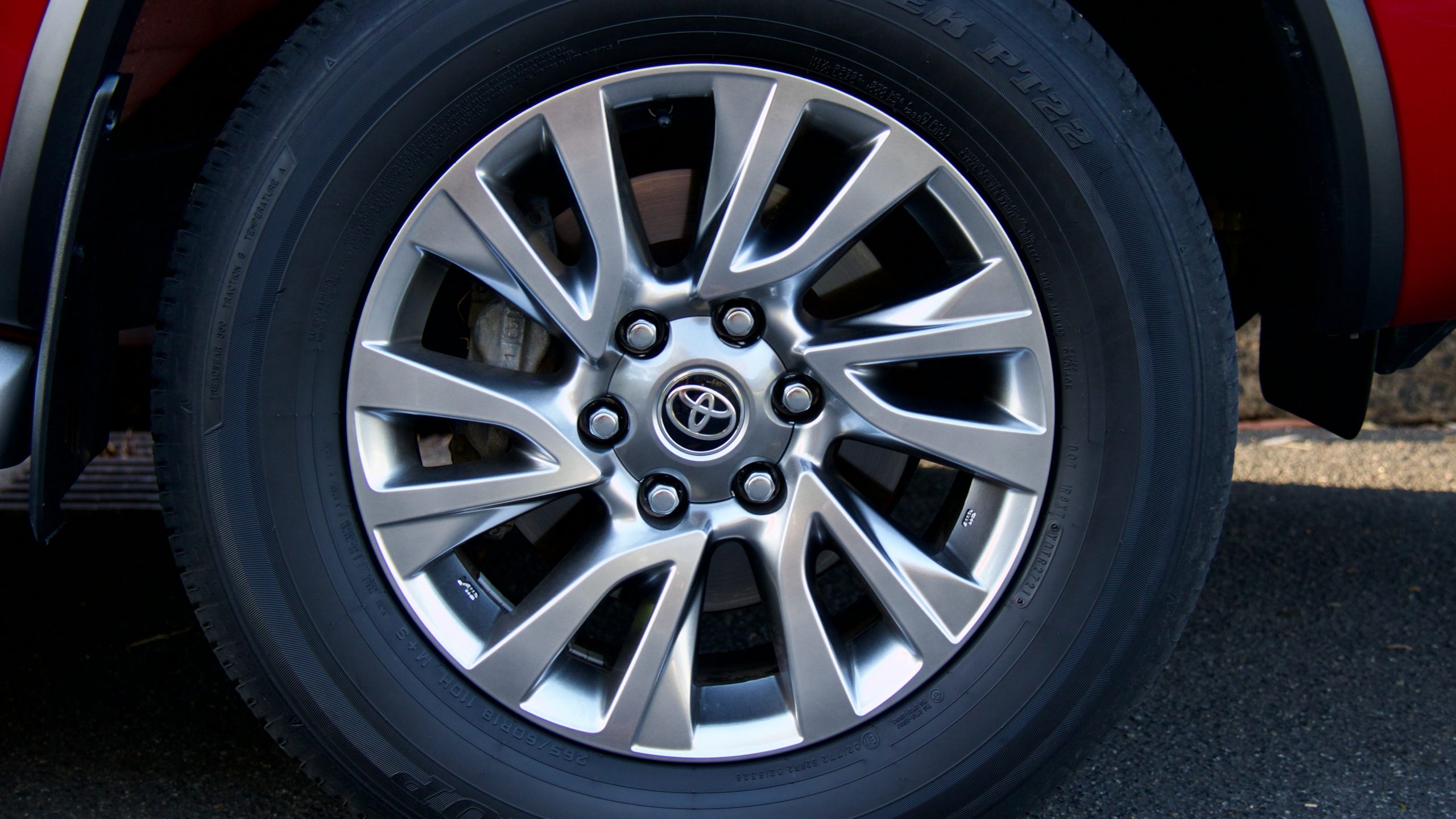
The Fortuner has a questionable value proposition – the Everest Trend is only around $2700 more but value-wise makes more sense with the sheer amount of additional equipment. Even worse news for the Fortuner is the MU-X, which is both $3000 cheaper than the Fortuner, but also features plenty of additional equipment – we’d be hard pressed to recommend the Fortuner over an MU-X for this reason alone.
In order to improve the value equation and bring the Fortuner in-line with competitors, we’d like to see Toyota add in a larger driver information screen or digital instrument cluster, more USB charging points, auto-retracting door mirrors, a larger infotainment screen, intersection turn assistance, reverse AEB, stop and go functionality for the adaptive cruise control, rain sensing wipers, auto high-beam, lane keep assistance, an alarm system and an electronic parking brake.
Performance & Economy: 8/10
Doing duty in the Fortuner is a four cylinder 2.8 litre turbo diesel engine which produces 150kW of power (between 3,000rpm and 3,400rpm) and 500Nm torque (between 1,600rpm and 2,800rpm). Power is sent to all four wheels via a six-speed torque converter transmission through a part time 4×4 setup. Thanks to torque delivery low in the rev range, the Fortuner feels quick – it gets up to speed swiftly. The engine is responsive and there is plenty of grunt when required, important given many buyers will add up to seven passengers and luggage. The Fortuner compares well to the Everest with similar engine outputs and it bests the MU-X in the torque and power.
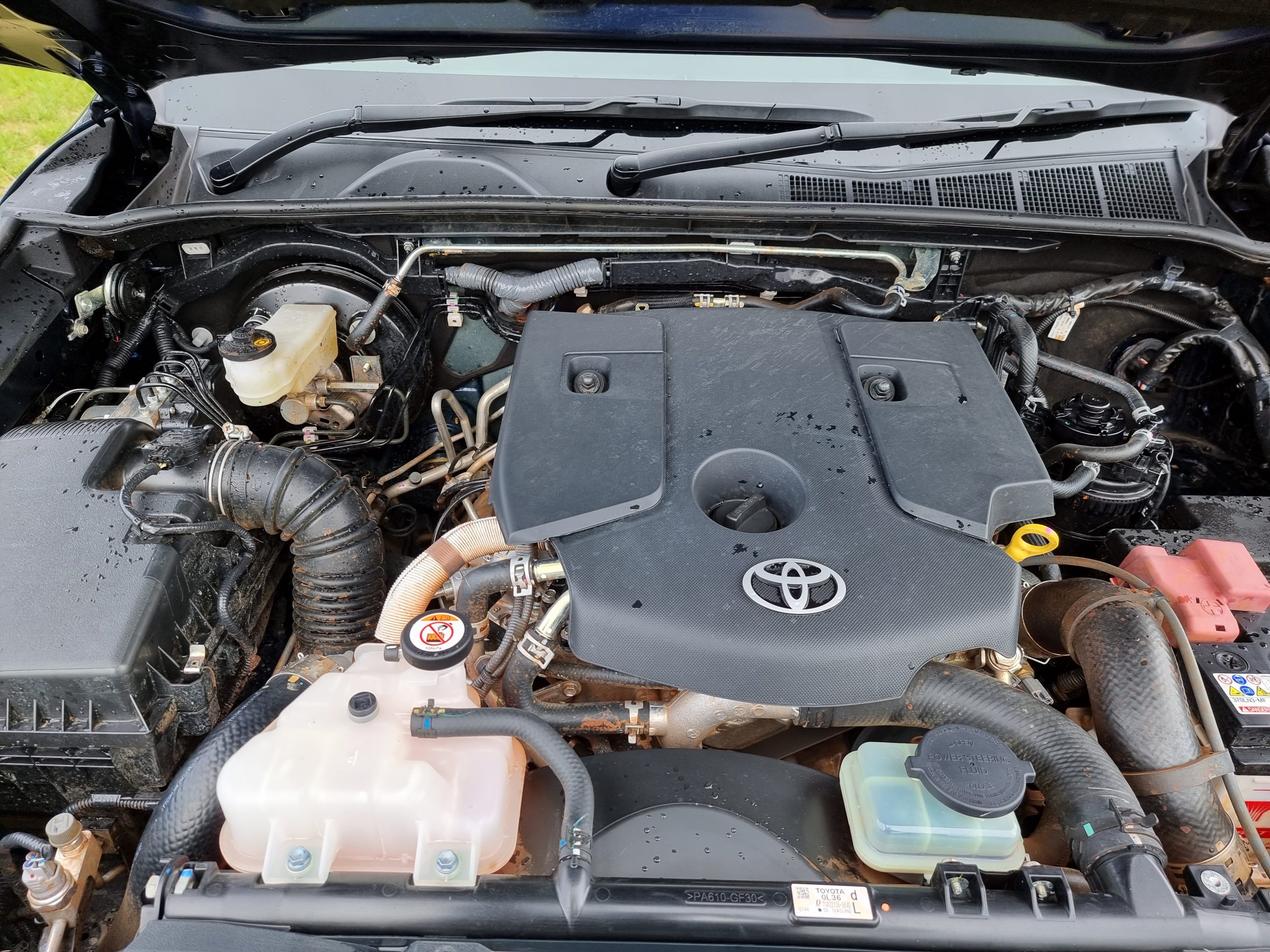
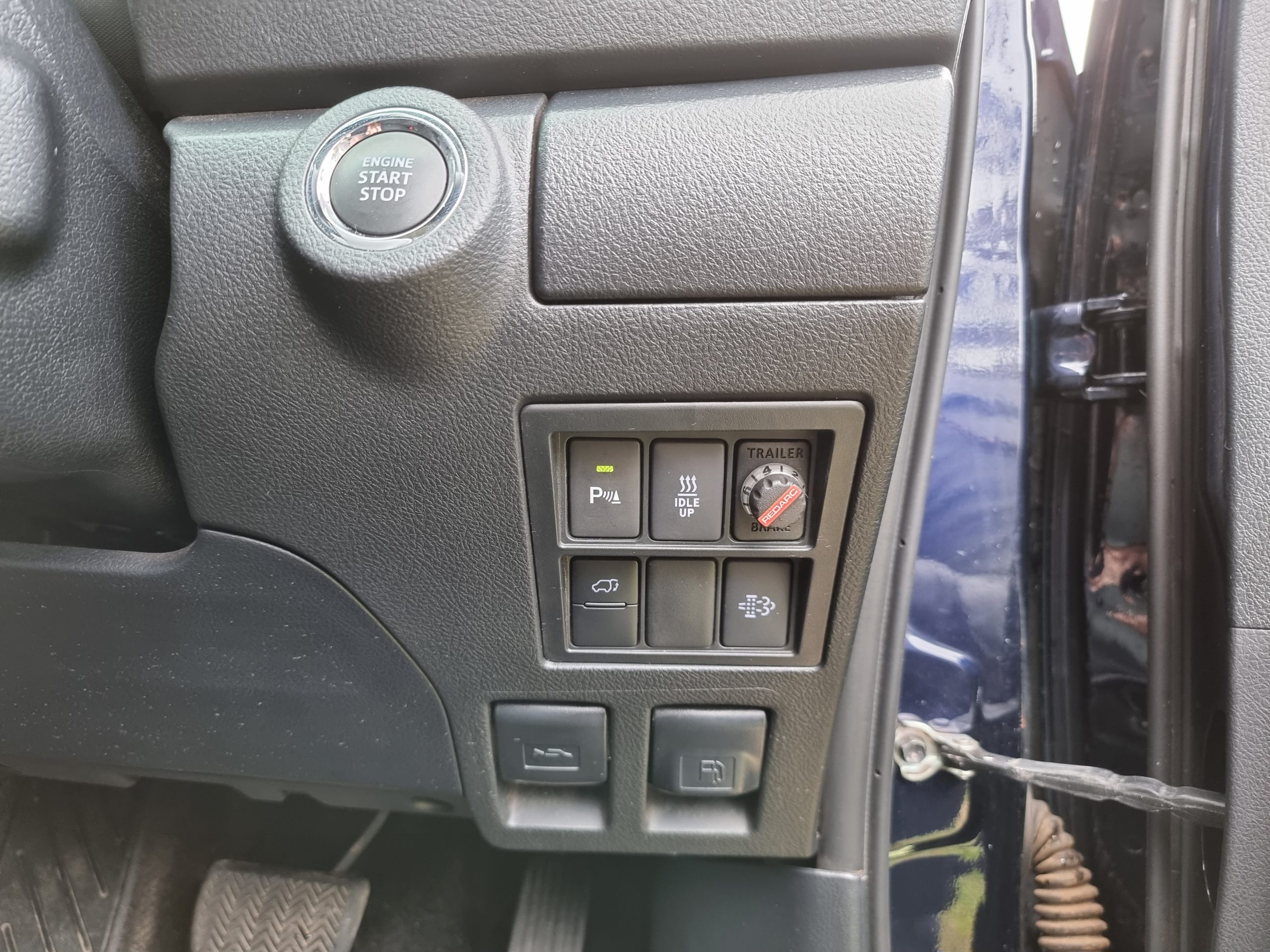
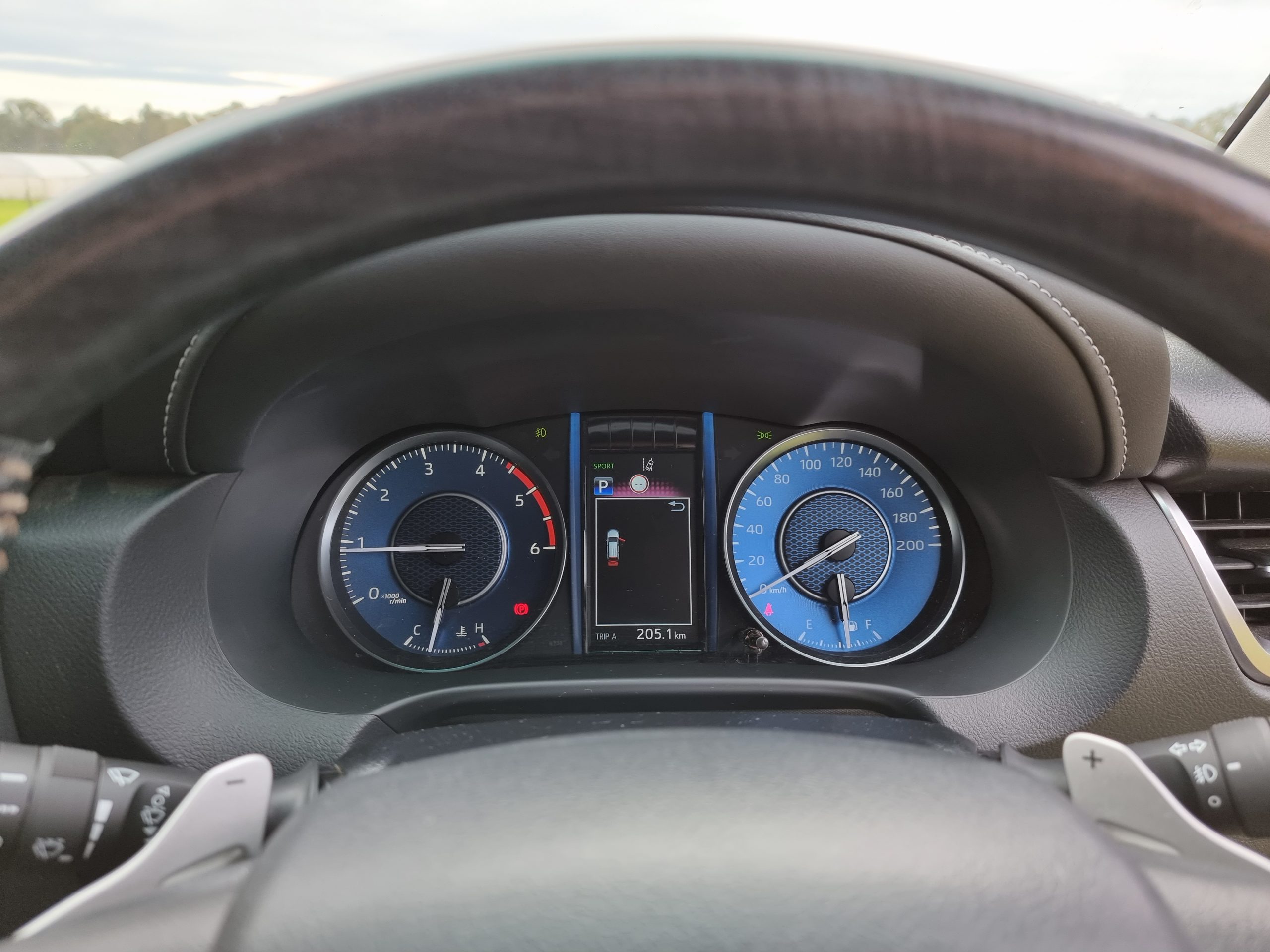
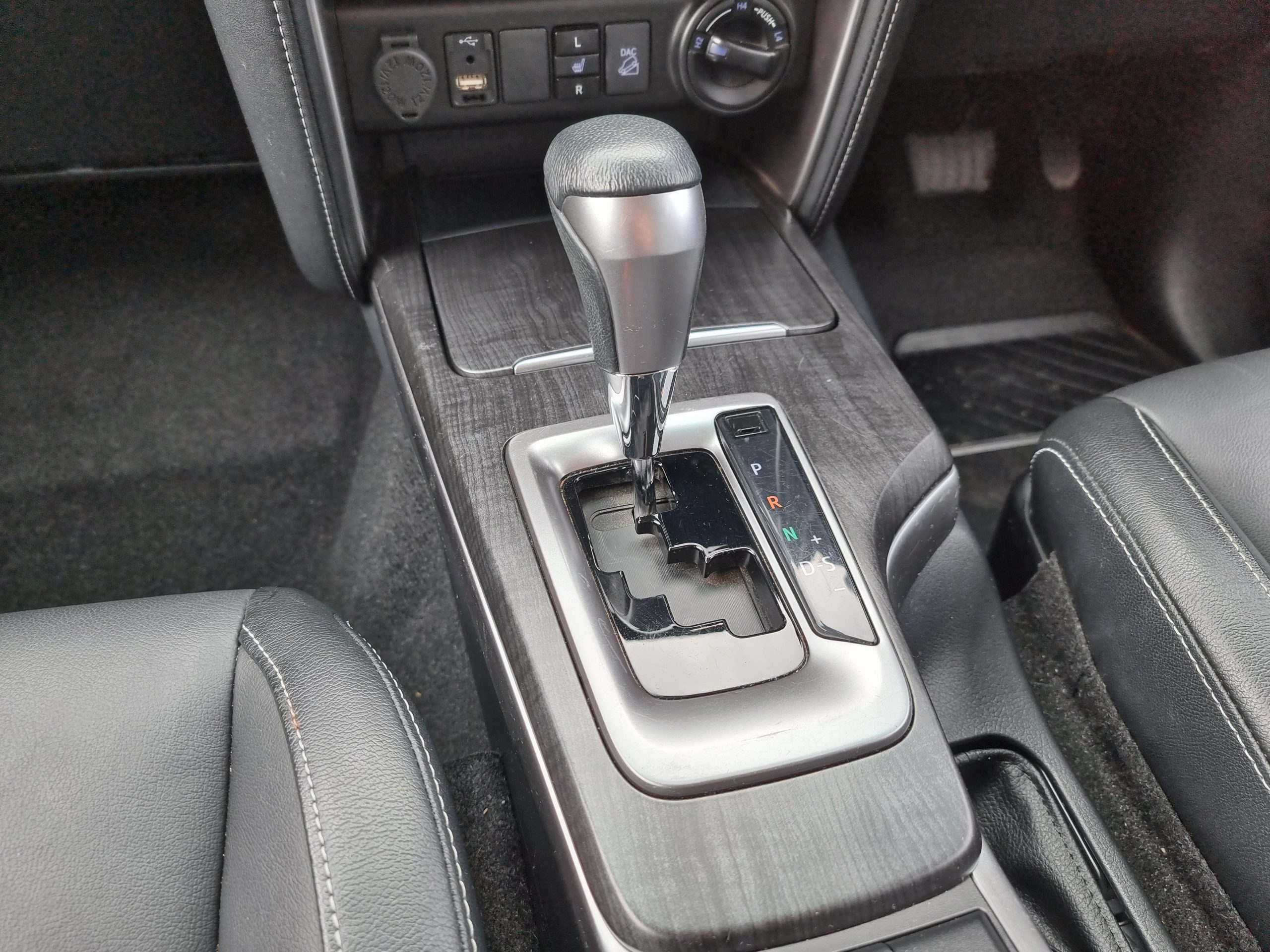
The six speed torque converter is a fairly good match to the engine, it is smooth and shifts fairly quickly. Occasionally we did feel like the Fortuner could do with an additional gear ratio or two, but overall we were happy with the transmission and it rarely became confused. In terms of refinement, the drivetrain is middle of the road – it can’t match the Everest and it’s luxury SUV like buttery smoothness, but we’ve definitely experienced less refined diesel engines. Acceleration is fairly smooth and engine vibration is reasonably controlled.
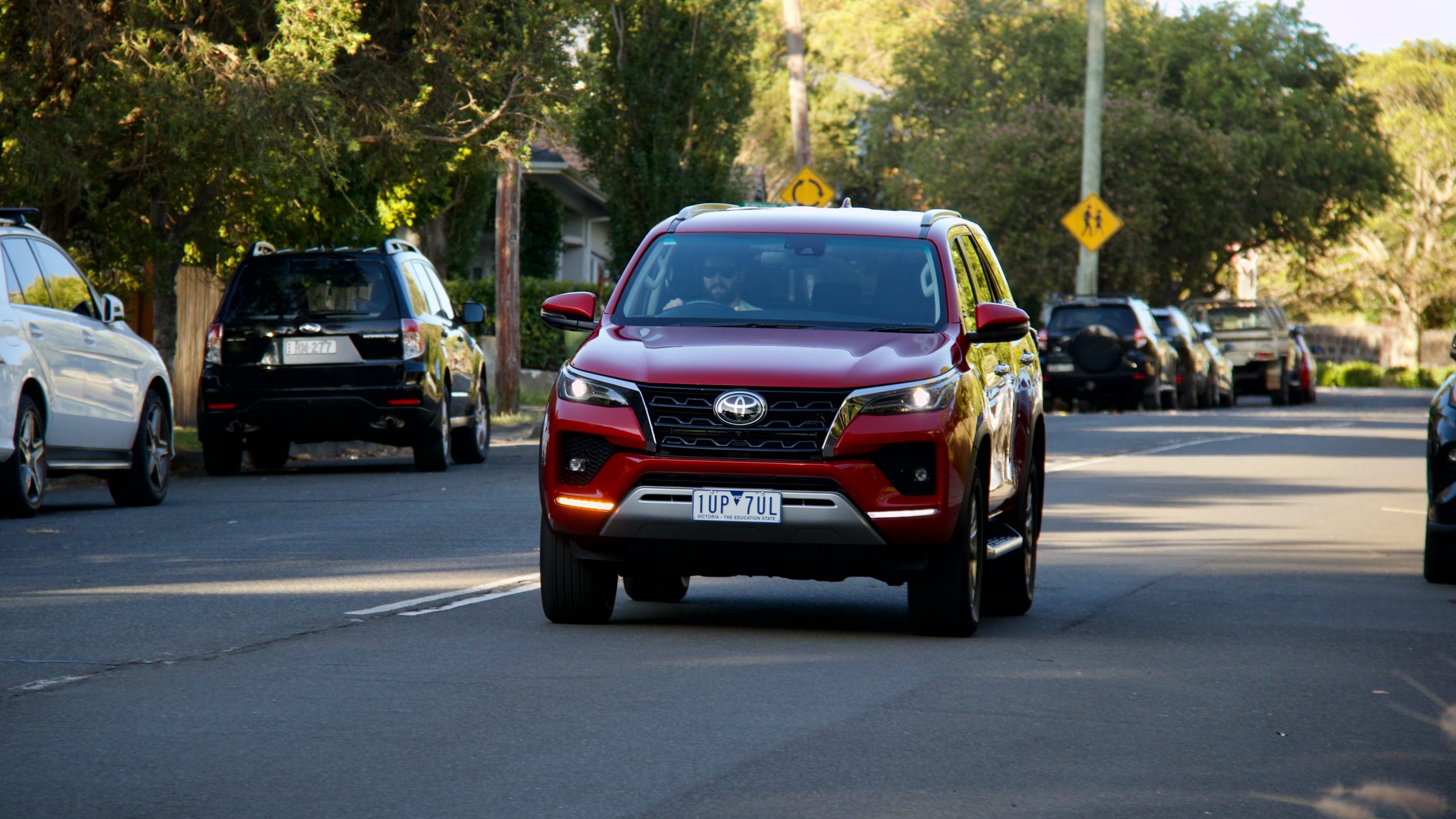
Toyota claims the Fortuner will use 7.6L/100km – we weren’t able to match this, achieving 10.5L/100km during out time behind the wheel, which was spread over highway runs, fairly heavy traffic and suburban driving. Toyota quotes emissions of 201g/km of CO2, based on achieving Toyota’s claimed combined fuel usage. With a full 80-litre fuel tank, a range of around 760km should be achievable in the Fortuner based on that consumption. The towing capacity for the Fortuner is 750kg un-braked and 3,100kg braked (most can tow 3500kg braked).
Ride & Handling: 7/10
Getting behind the wheel of the 2022 Toyota Fortuner Crusade reveals ride quality which is better than expected in terms of comfort and it feels particularly at home on the highway. Around town, things can get a little crashy, especially when there aren’t any passengers but the suspension does a reasonable job at soaking up most things Australian roads can throw at it. Noise suppression is acceptable, however tyre roar and road noise is noticeable, though still more than ok at highway speeds.
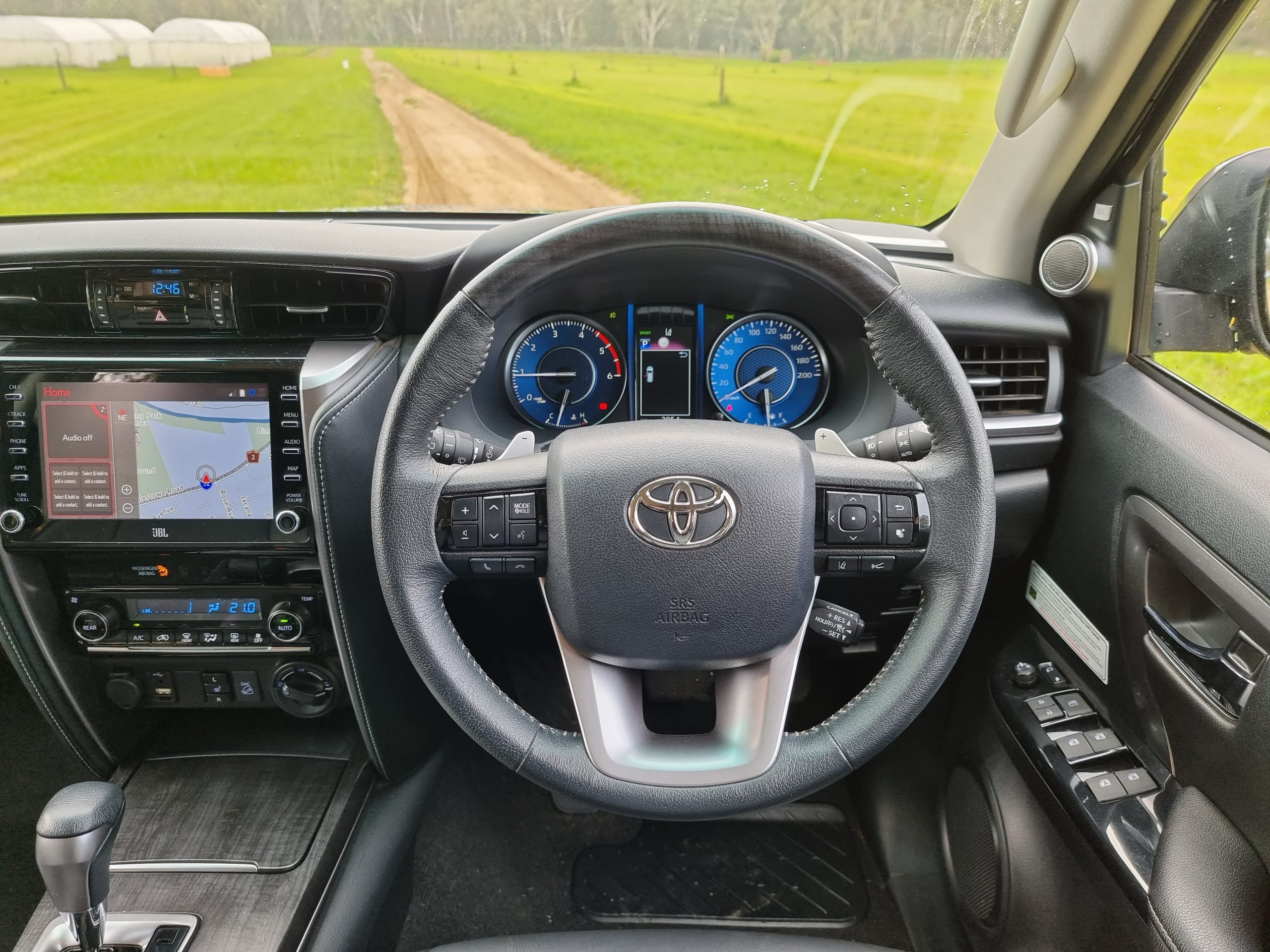
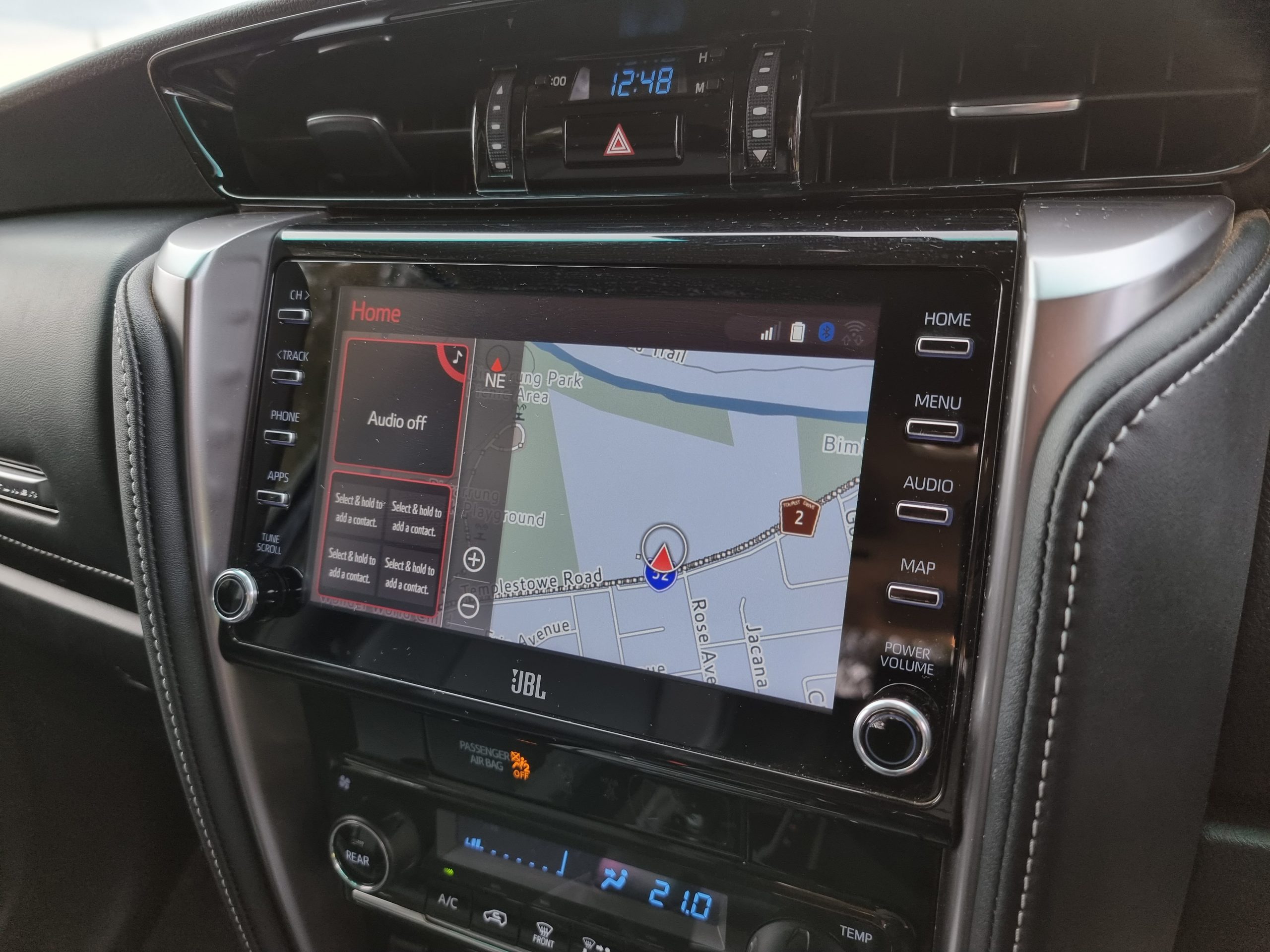
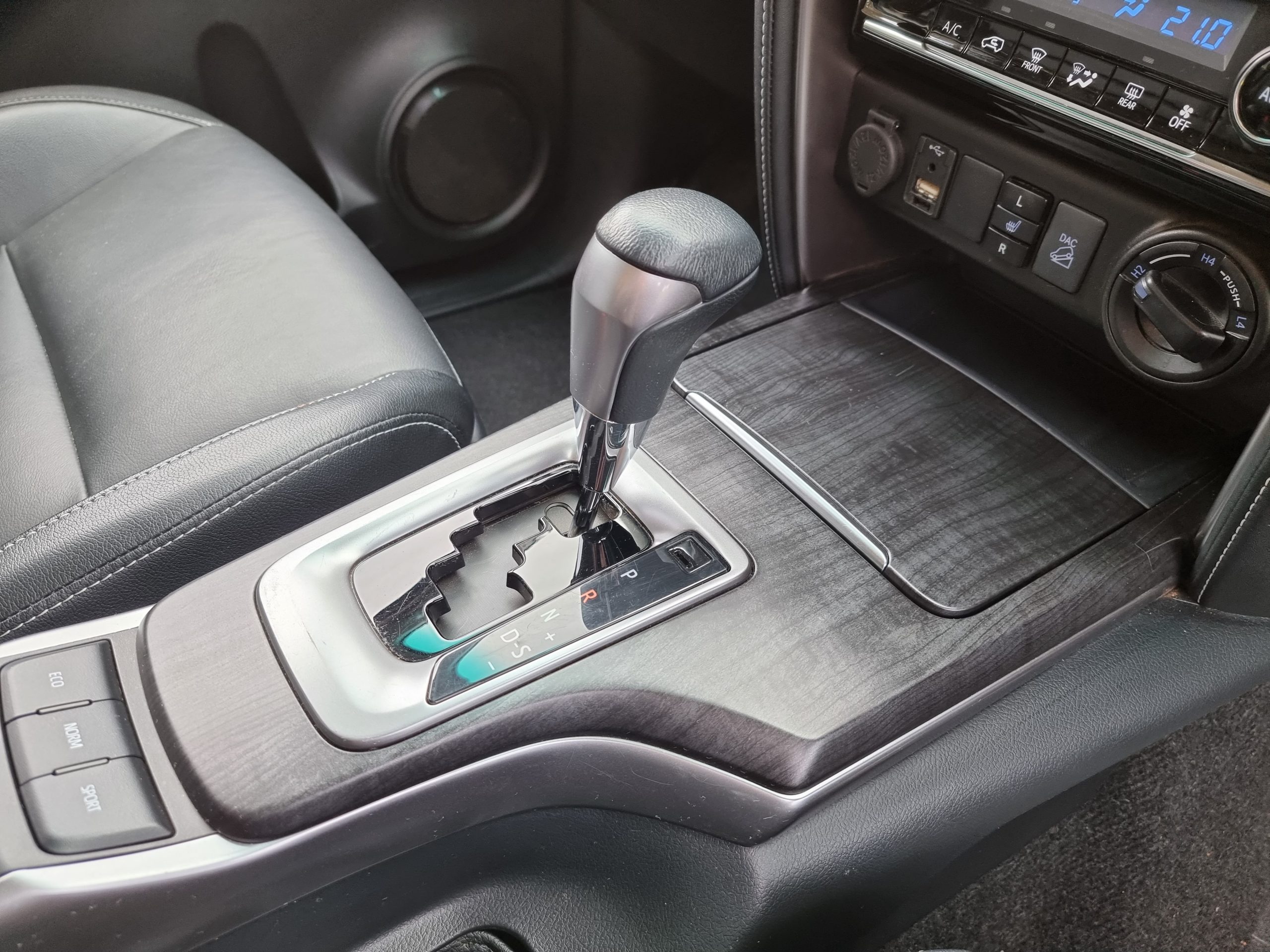
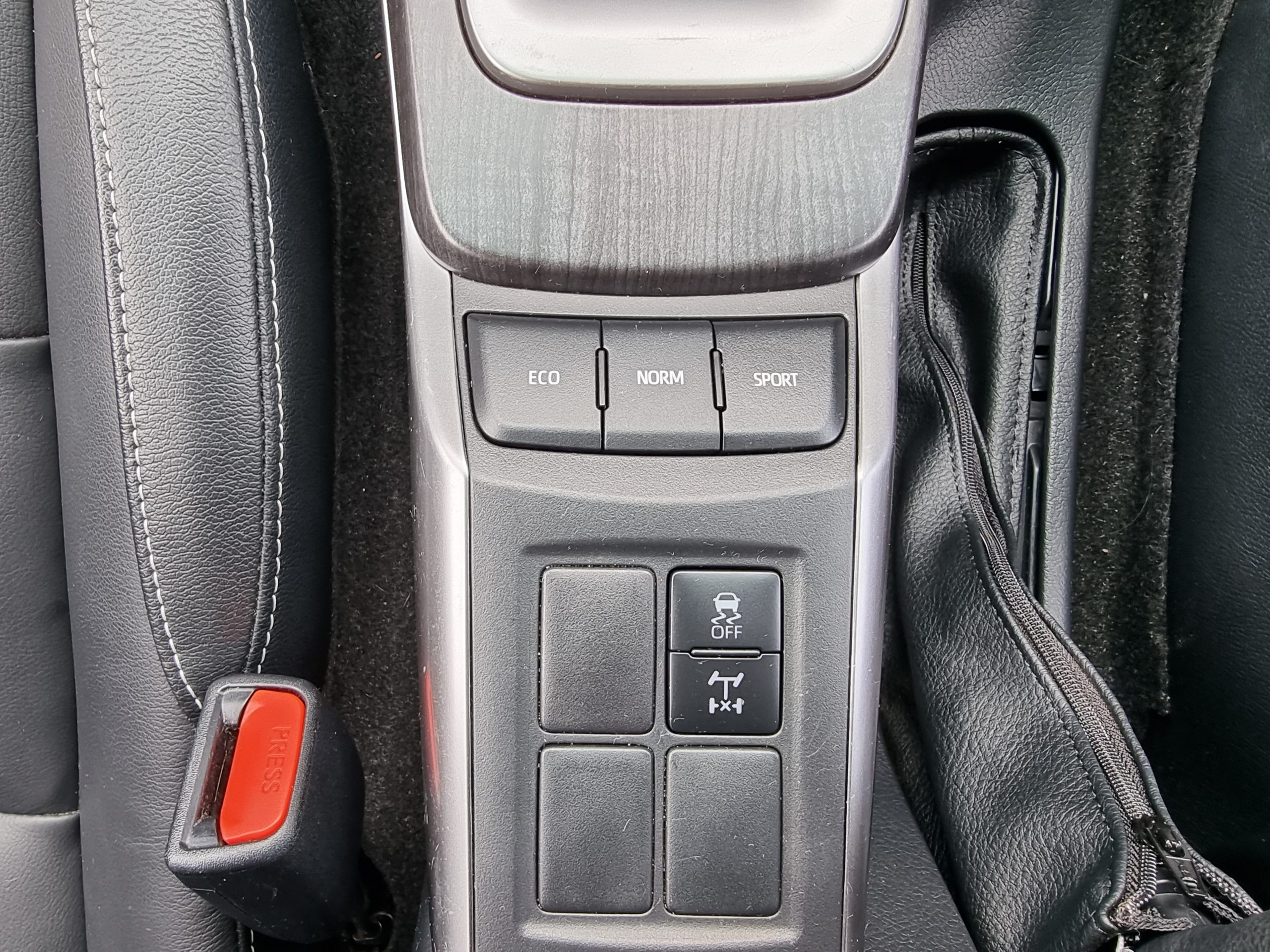
Handling-wise, the Fortuner is definitely on the agricultural side. The steering is quite heavy, and can get a bit cumbersome in tight city streets and underground carparks, while it also lacks feel. Given many owners will use the Fortuner for everyday life in suburbia, it’s hard to escape that the Fortuner feels massive to drive. In terms of body control, it’s hard to shake the feeling you’re driving a truck-like ute, with plenty of understeer evident.
While nobody is buying a Fortuner to drive like a sports car, better handling is always appreciated and it’s hard not to notice that the Isuzu MU-X feels a generation newer and the Ford Everest feels two generations newer in the handling stakes and in reality, that’s because it is. The 2022 Toyota Fortuner is pushing eight years on the market, and it’s very noticeable here.
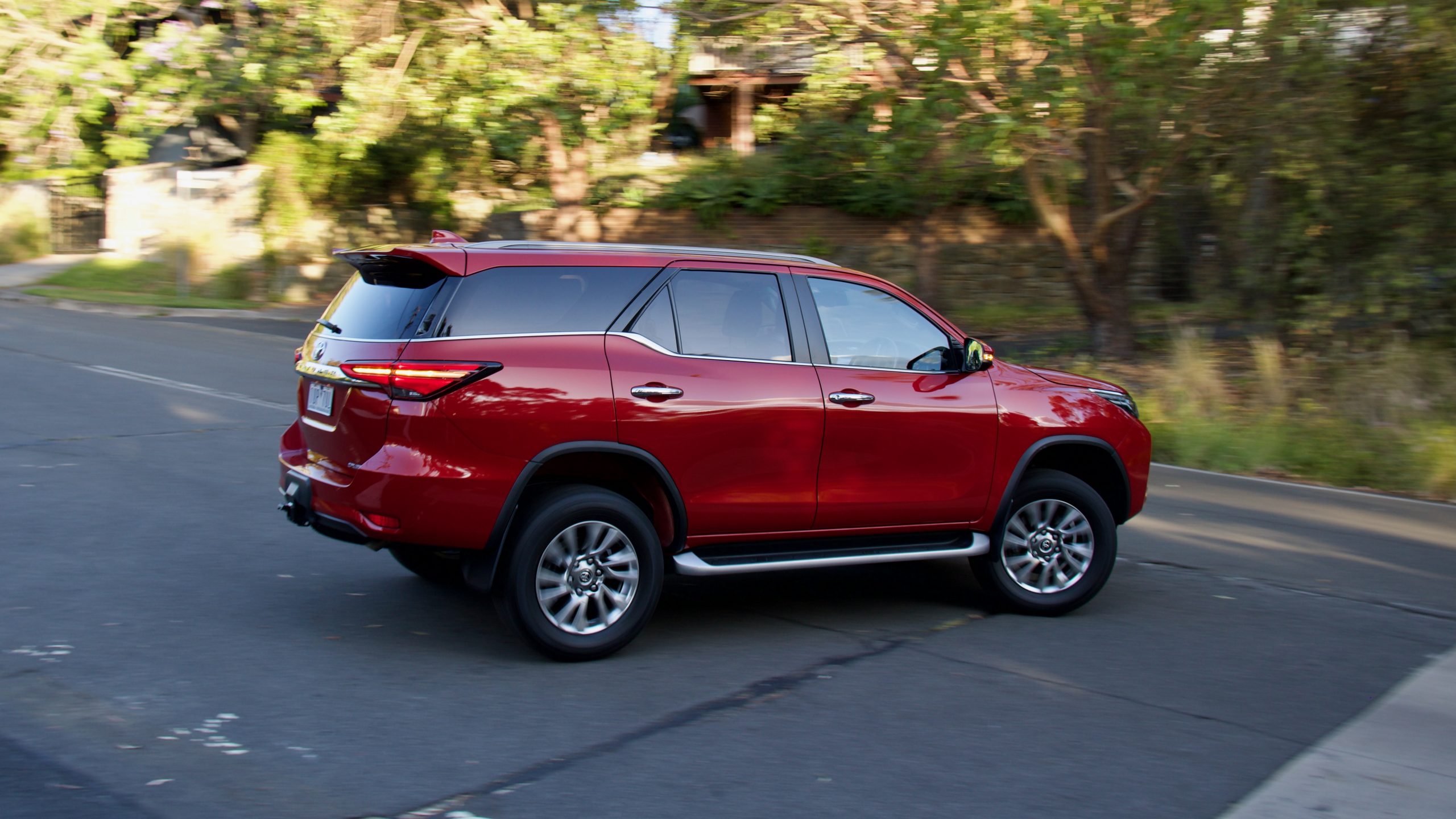
Visibility from the front is quite good, but out the back is impacted by the old school side folding third row of seating, which limits rear side visibility. The simple solution is to fold the seats down, but this eats into luggage space – we’d like to see floor folding seats instead. Luckily there is a 360-degree camera to compensate, however we’d rather not to rely on it – more on this later!
Off the beaten track, the Fortuner is capable with rear differential locking, low range 4WD gearing, downhill assist control plus stability and traction control which is reasonably well calibrated for gravel and other loose surfaces. The 216mm ground clearance isn’t class leading but is perfectly workable for off-roading.
Interior & Practicality: 7/10
Inside the 2022 Toyota Fortuner is more civilised version of the HiLux’s interior, with a hodgepodge of different pieces out of Toyota’s 2012-2022 parts bin. Luckily the interior features more soft touch materials and sun-like design elements than its more hard wearing ute sibling. In addition to the expected centre armrest and door card armrest, the top of the instrument cluster, sides of the centre dashboard are covered in padded leatherette, which does help raise the ambience of the space.
Unfortunately exploring beyond these select surfaces, almost all other surfaces are hard, scratchy plastics – while we’re sure they’ll last forever in true Toyota form, they don’t help sell the interior against more modern interiors. We don’t mind the faux timber on the centre console, but the semi ‘timbered’ steering wheel is a throwback. Helping the Fortuner’s case are the good quality switchgear, including the power window switches, infotainment buttons and A/C controls which all feel great to use, thanks to great tactical feedback.
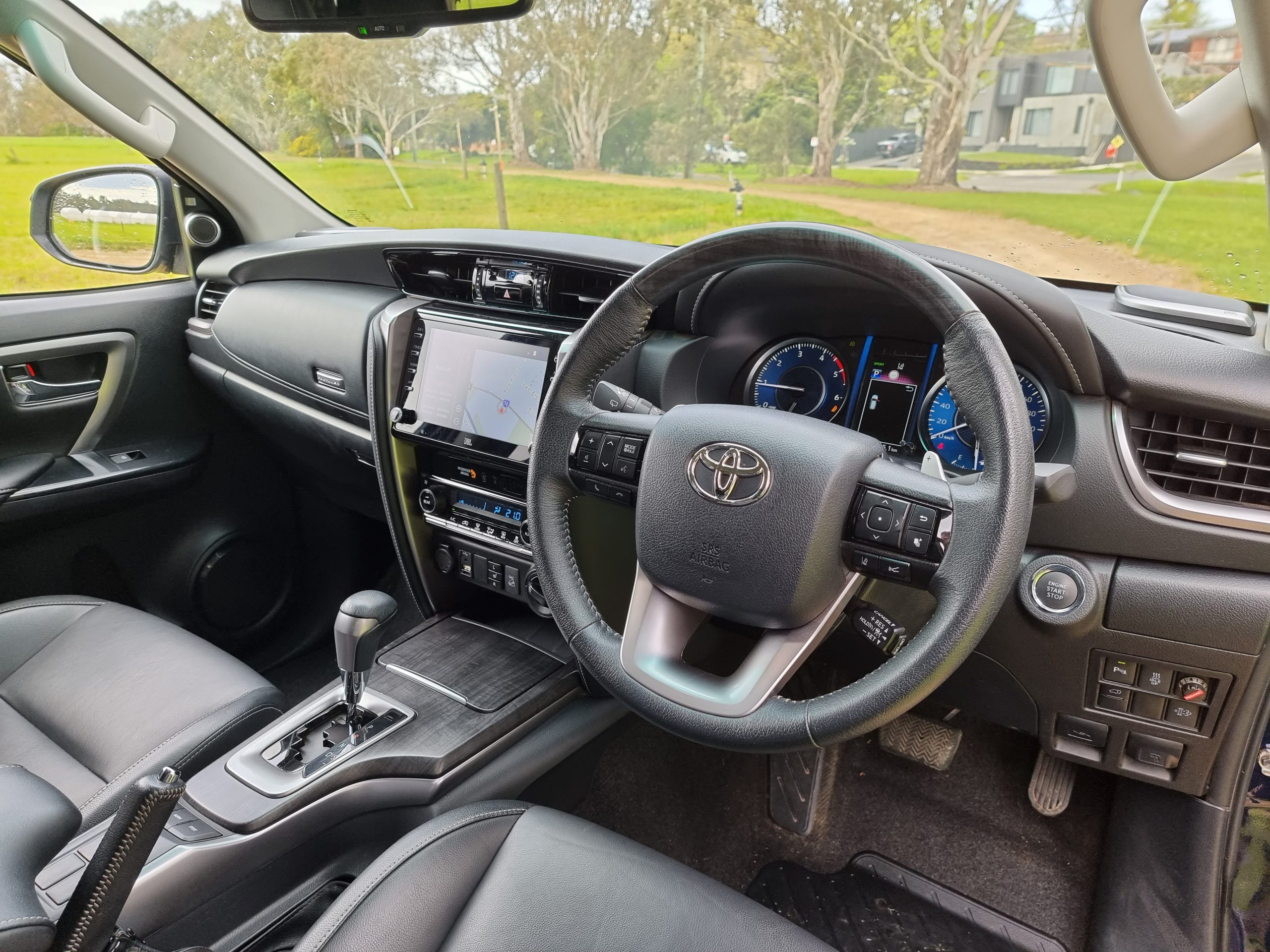
The ‘leather accented’ interior trim is not class leading, but is acceptable. The front seats are unfortunately quite flat and not very supportive. At least both the front seats have eight ways of power adjustment, allowing for most drivers to find something that works for them – though no lumbar adjustment is annoying. The driving position in general is good. Both front seats are heated, though with very old school single stage heating – that’s right – you can have hot seats, or nothing. A highlight is the oversized and very comfortable centre armrest – it’s well padded and helps with driver comfort.
The dash is fairly simple and very emblematic of last generation Toyota design philosophy – well laid out and functional but old school. Driver information is displayed in a 4.2-inch LCD display that is flanked by analog dials with an interesting blue design – they do the job, but a larger digital display or fully digital cluster would help modernise things.
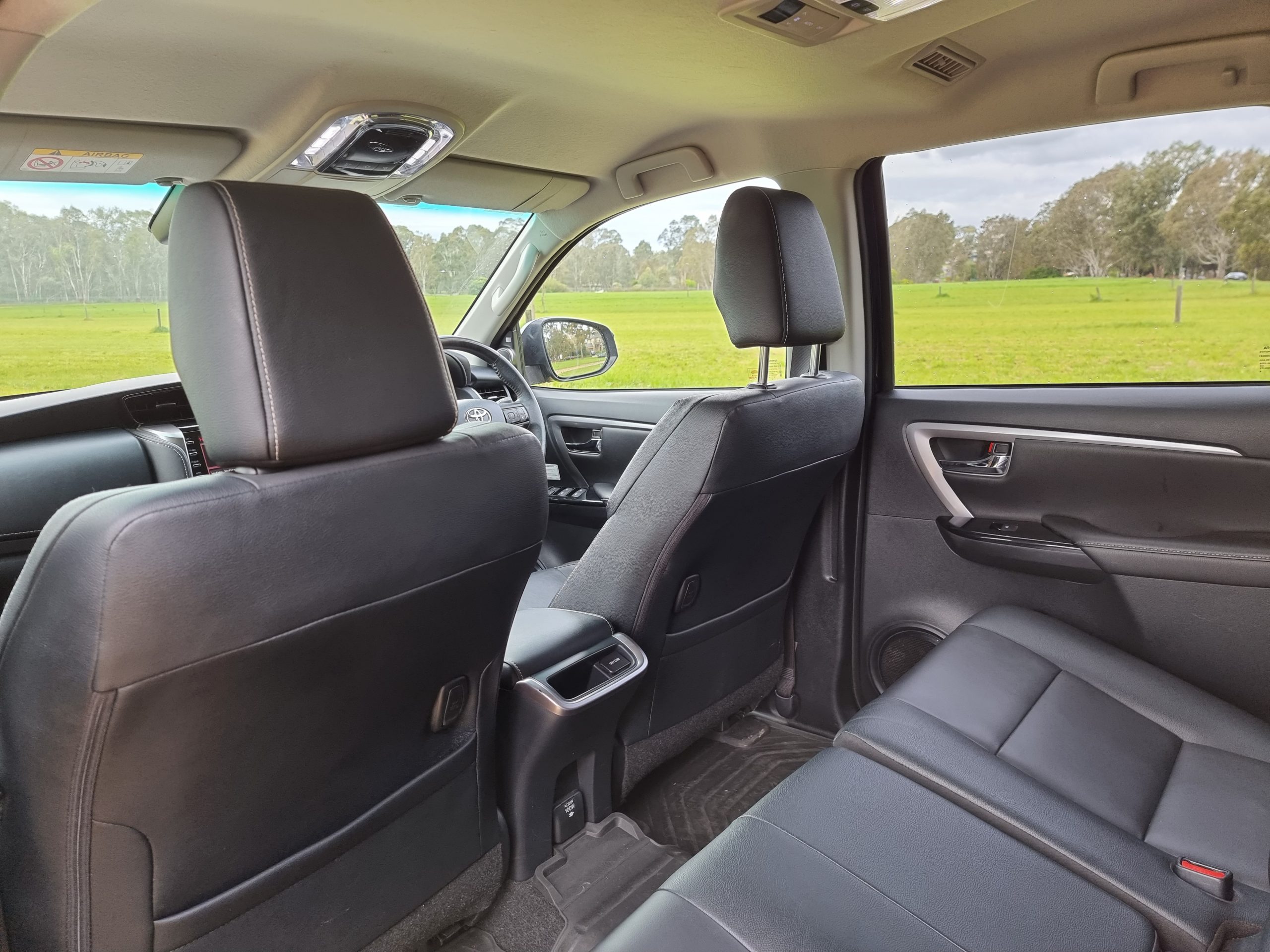
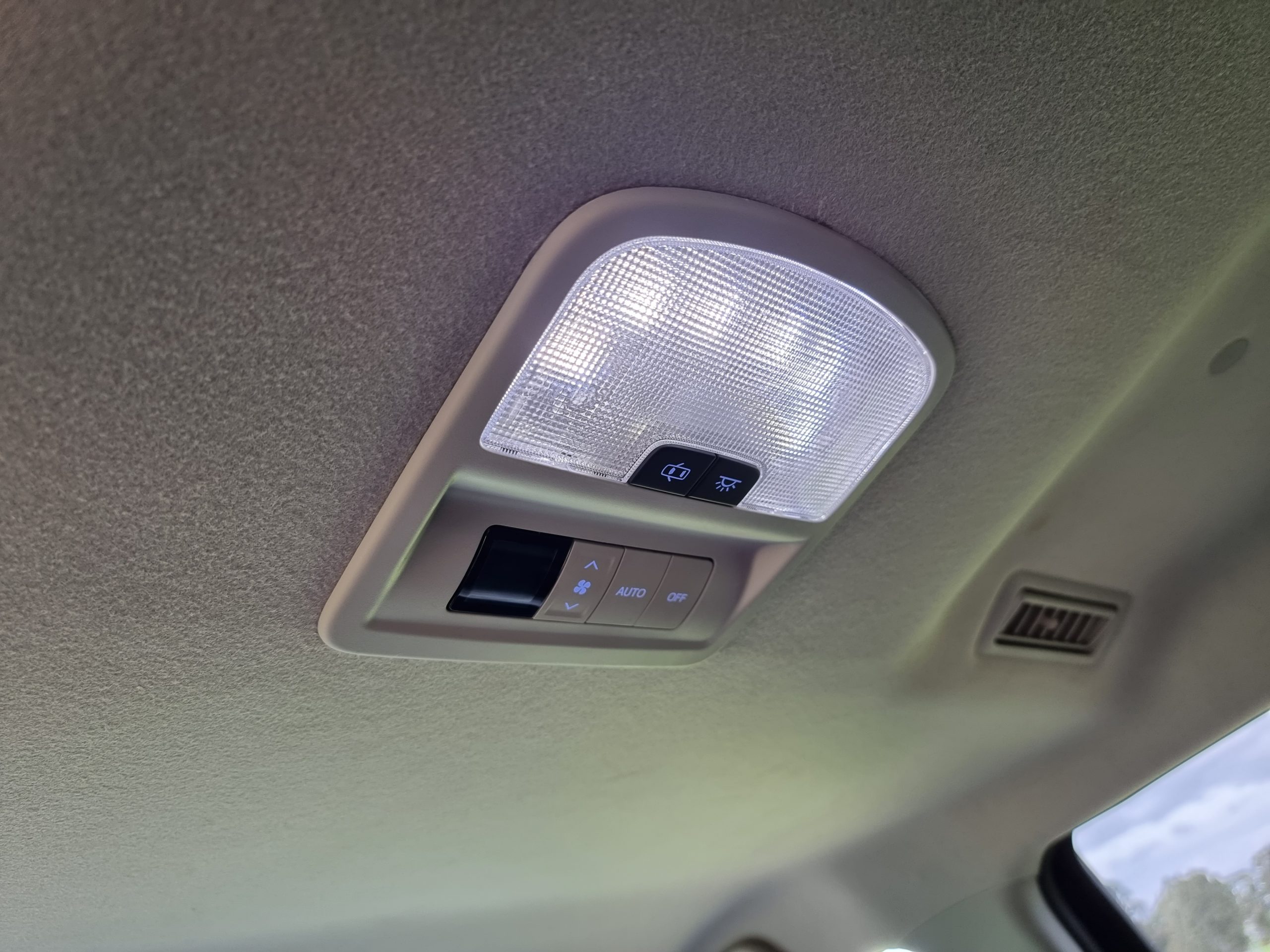
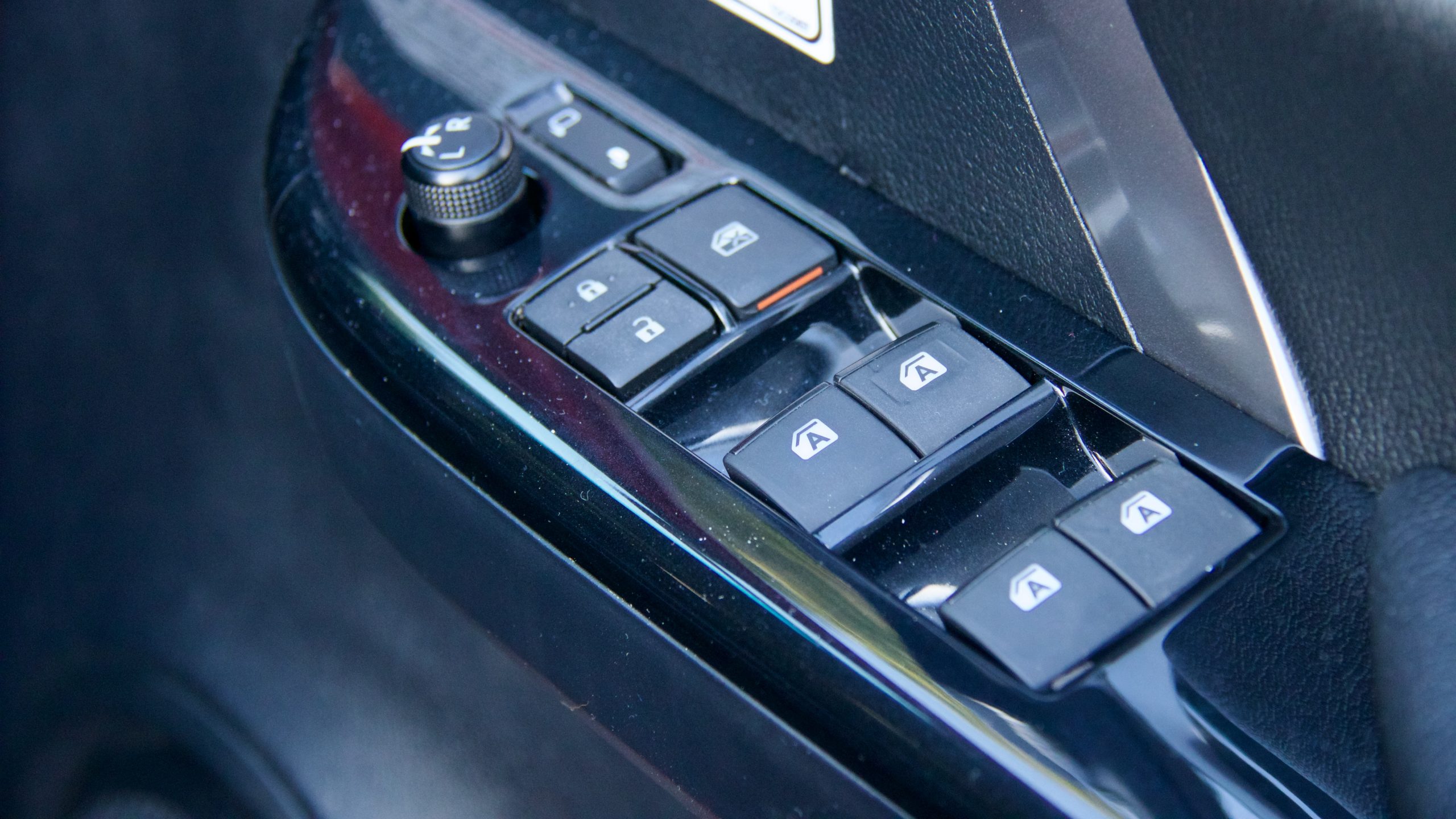
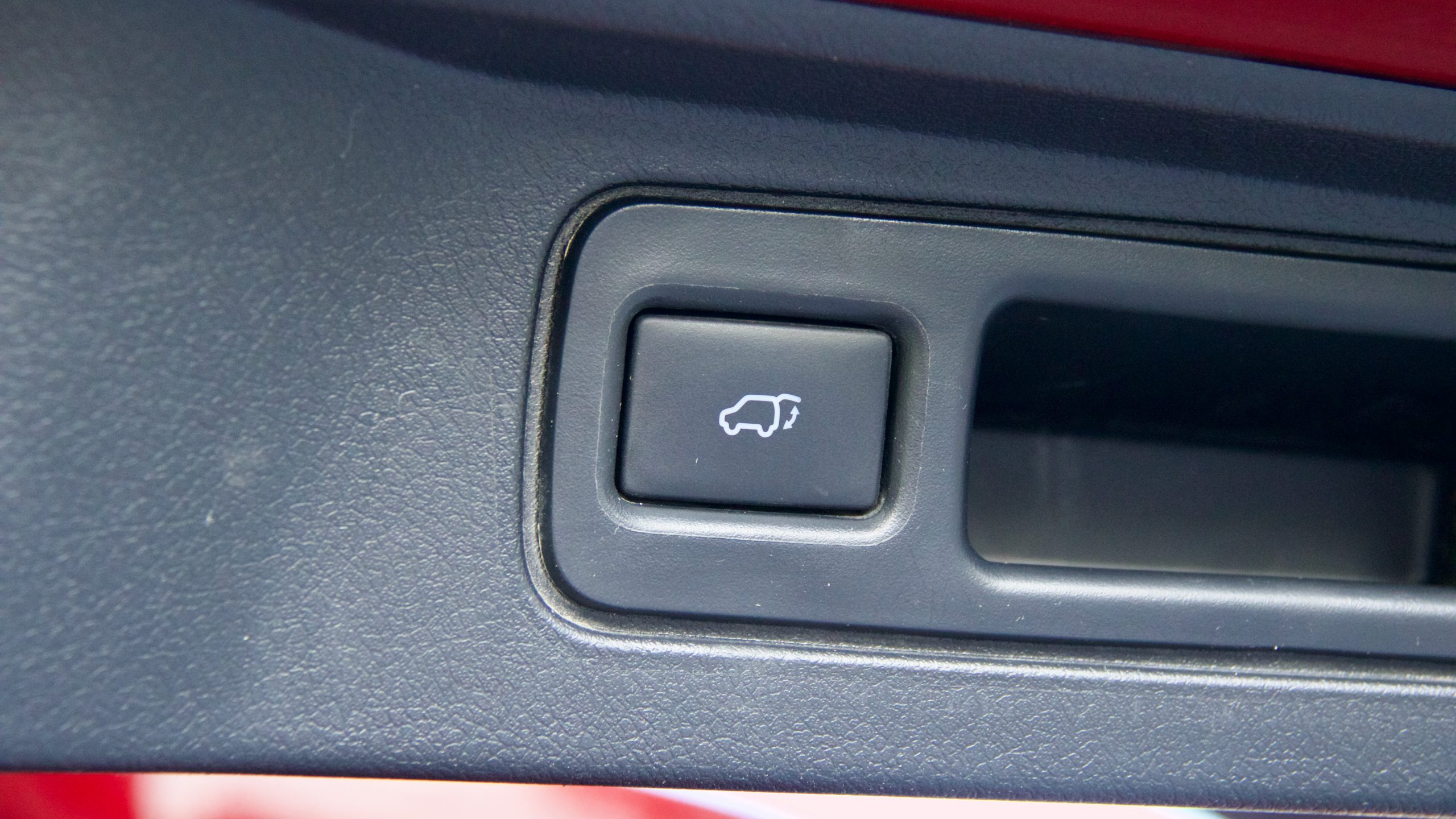
Storage throughout the cabin is fairly good with a fair sized cubby ahead of the gear shifter, a large centre console box, good sized door bins, pop out drink holders under the front side air vents (handy for keeping your drinks cool), a reasonable sized glovebox and a helpful second glovebox which doubles as a cooler box for those long summer drives.
Infotainment in the is provided by an 8.0inch touchscreen with wired Apple CarPlay and Android Auto, DAB+/FM/AM radio, bluetooth and satellite navigation. The system is fairly intuitive to use and we like the physical shortcut buttons and volume knob which make the system easier to use. What’s less desirable is Toyota’s software which while easy enough to use, feels dated in 2022. The worst part of the experience is the camera quality of panoramic view monitor and reversing camera, which are borderline unacceptable. The 360-degree camera is hard to make out detail on and has the slightest shake (which we’ve also seen on other Toyota products). Hopefully the new generation system in the Corolla Cross and 2023 RAV4 makes it to the Fortuner soon.
In terms of charging options throughout the cabin, passengers will have to supply their own 12V to USB adaptors, as there is only a singular USB point in the Fortuner, which doubles as input for the infotainment screen, so it will probably not be available to passengers. Yes you heard right – one USB input in 2022. Laptop users fare better with a useful 240 volt socket in the second row, however.
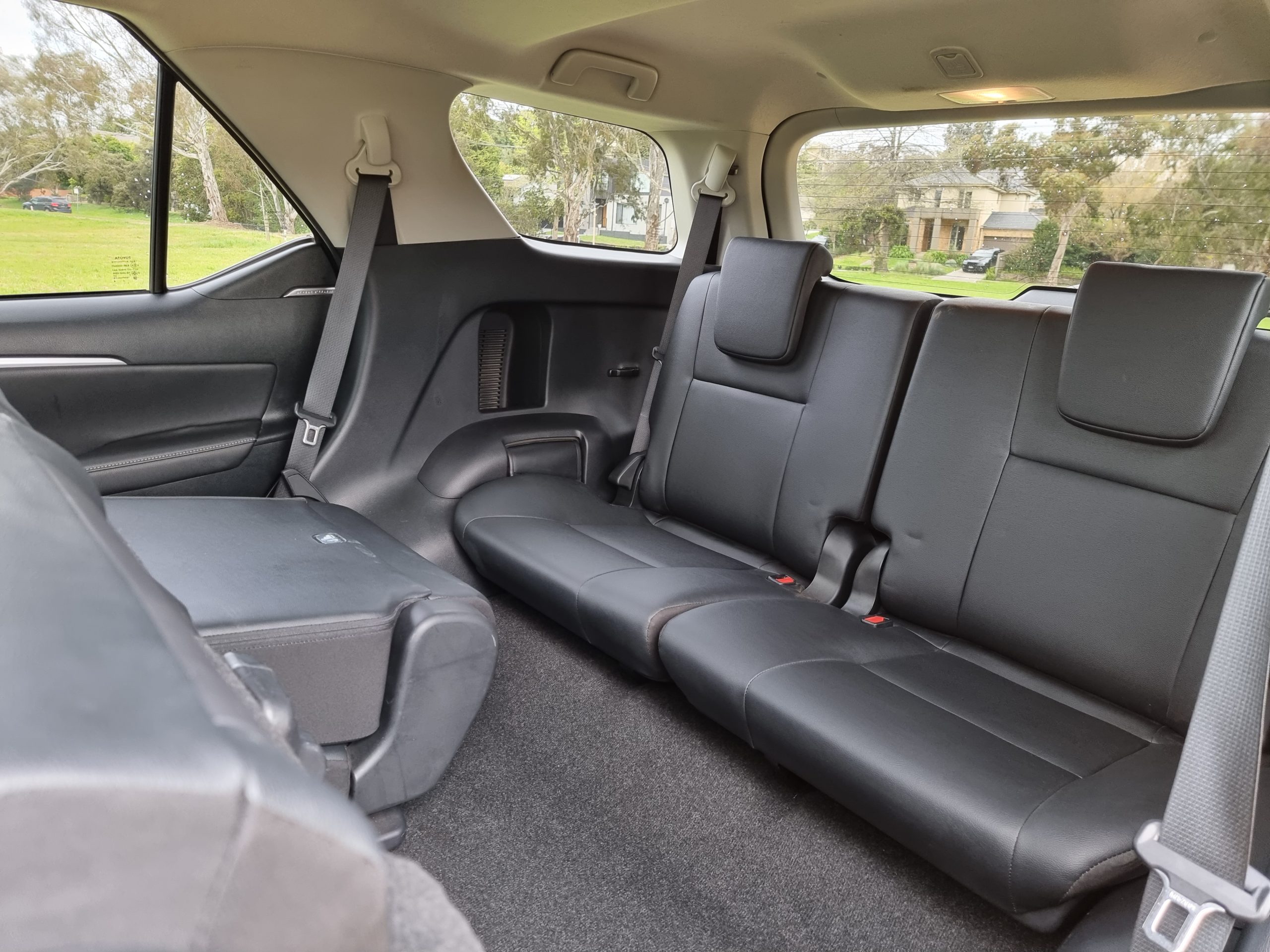
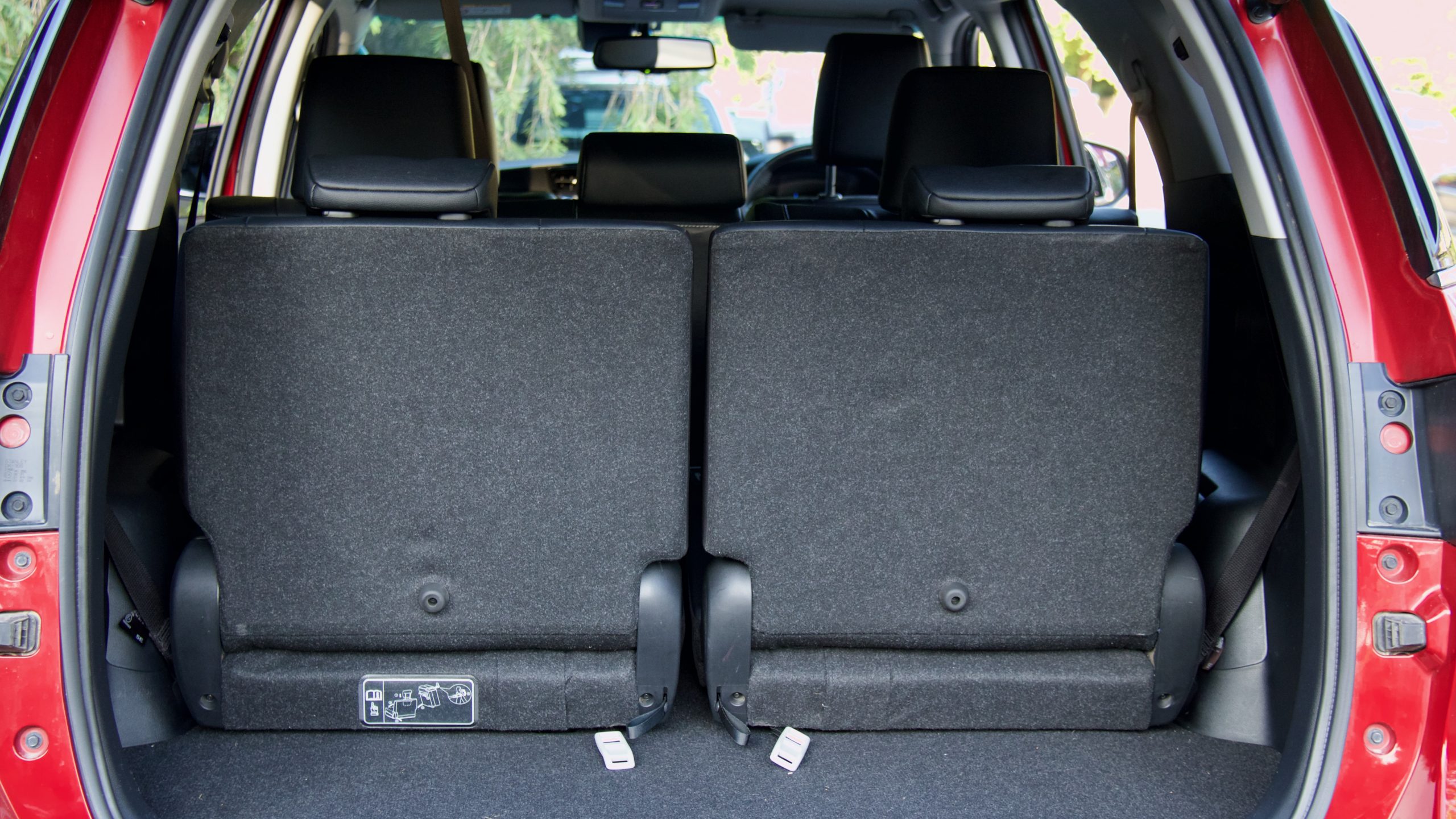
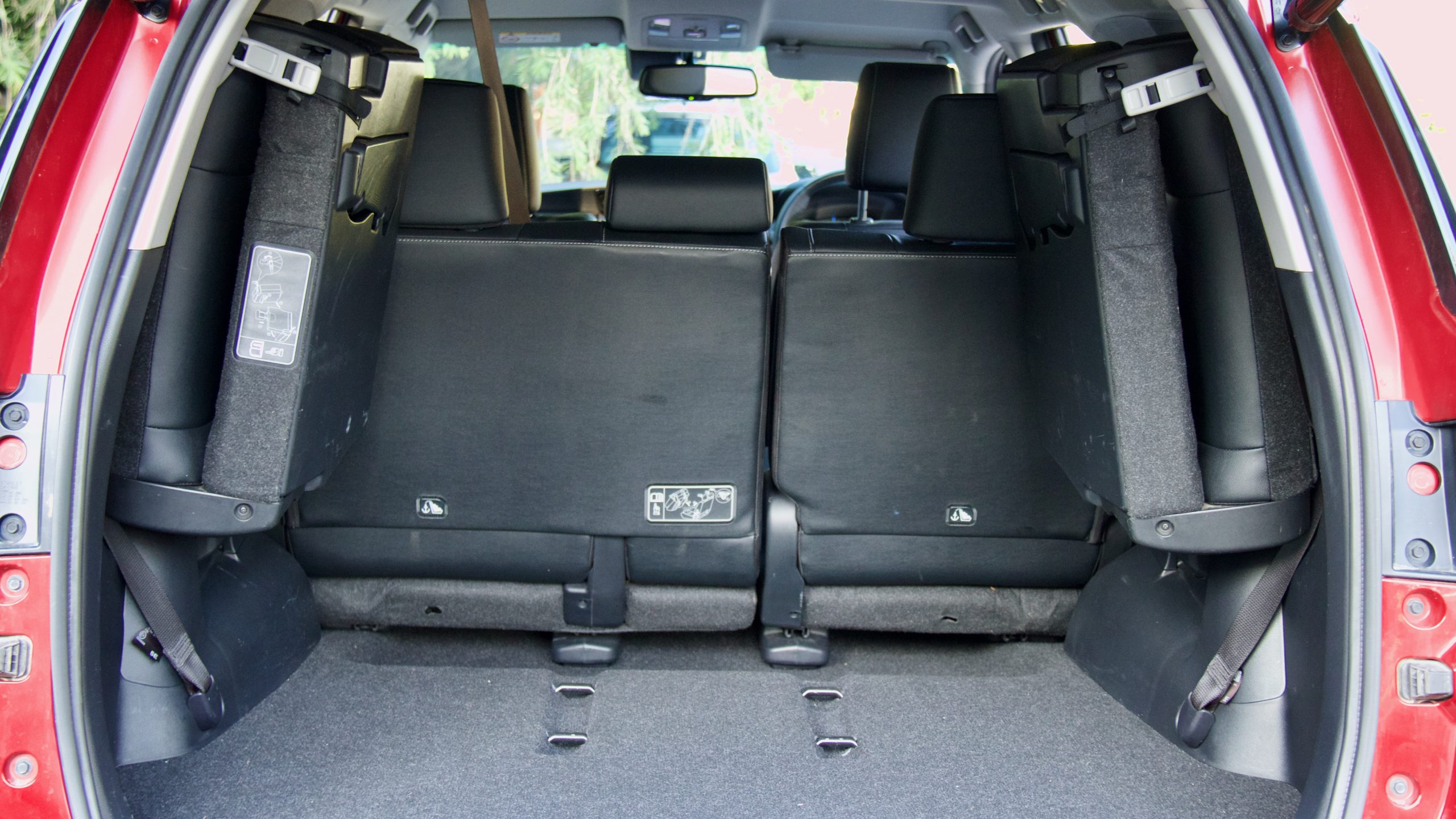
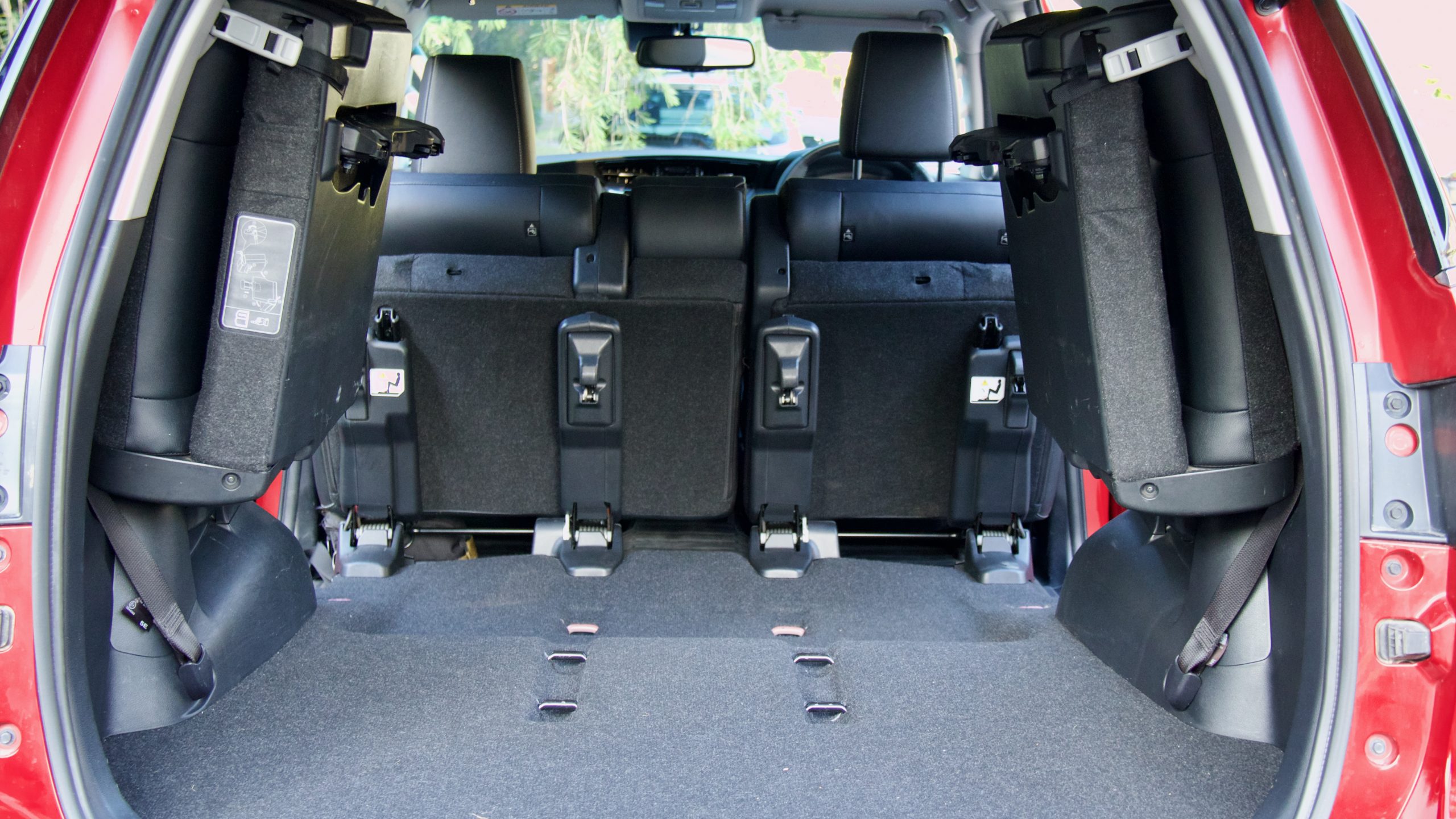
Second and third row passengers have ceiling mounted vents – they lack their own temperature zone, but luckily have a fan controller to offer rear seat occupants a bit of control. There are also door pockets and map pockets and a fold down centre seat armrest. The two outbound seats can accomodate taller adults with comfort in terms of leg and headroom. The centre seat is a bit more pokey with a transmission tunnel and narrow seat width – fine for adults for shorter journeys or perfectly fine for kids. Moving to the third row, things are tight – again fine for kids or for adults if you were desperate. The side stowed seats are very old school and not quite as simple to erect and put away as under floor seats are.
Toyota doesn’t quote boot capacity for the Fortuner, so we’ve had to obtain figures from elsewhere – with all seven seats in place, the Fortuner reportedly has 200-litres of space comparing to 259L in the Everest and 311L in the MU-X. With five seats in place, this grows to 716L, compared to 898L in the Everest and 1,119L in the MU-X. With the 2nd and 3rd rows stowed, we unfortunately weren’t able to obtain an accurate number for the Fortuner, but we believe it to be smaller than the Everest and MU-X.
Service & Warranty: 6/10
Toyota’s warranty package for the 2022 Toyota Fortuner Crusade covers five years and unlimited kilometres – it extends to seven years for the drivetrain if servicing has been carried out as per the logbook. This compares fairly favourably to the the five years and unlimited kilometres that Ford offers for the Everest, but doesn’t quite match the six years/160,000km warranty Isuzu provides for the MU-X – if you’re going to do do a huge number of kilometres in the first five years however, the Fortuner’s unlimited warranty might make more sense. Toyota doesn’t offer any free roadside assistance with the Fortuner, a rough deal when the Everest receives 12 months coverage that extends an additional 12 months (up to seven years) with each logbook service carried out at a Ford dealership. The MU-X does even better, getting seven years of included roadside assistance at no cost.
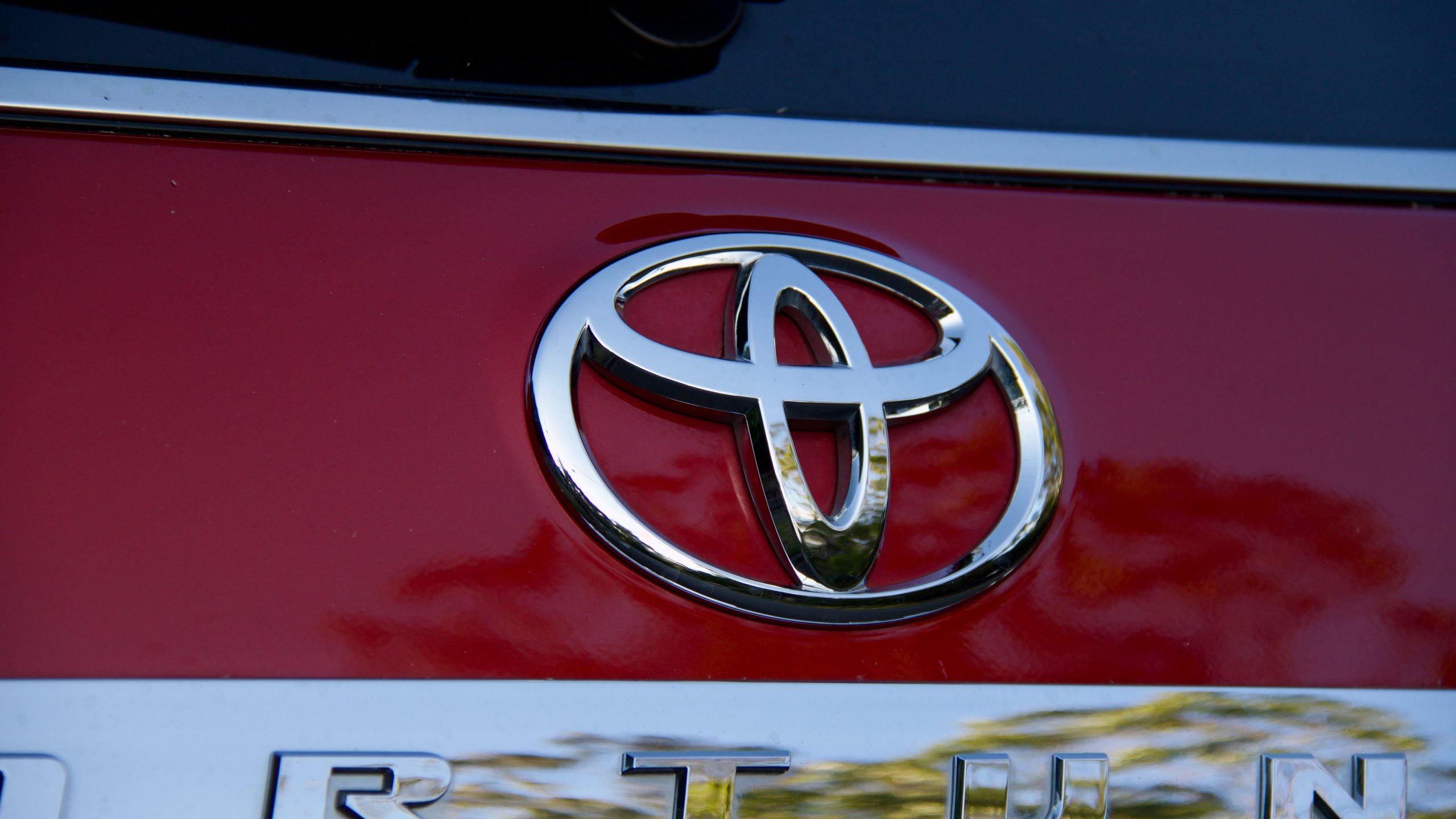
The Fortuner must be serviced an irritatingly regularly every six months/10,000kms (whichever comes first), and only receives three years/60,000km of capped price servicing, which adds to a total of $1,560 in this period. The MU-X has longer 12 monthly/15,000km (whichever comes first) intervals between services, which cost an ever so slightly less over the first three years at $1,545 – a much longer first seven services/years are capped by Isuzu. The Everest is the cheapest of the bunch to service at just $1,316 for the first three years, with intervals of 12 months/15,000km (whichever comes first).
The 2022 Toyota Fortuner Crusade DiscoverAuto Rating: 6.8/10
The Toyota Fortuner Crusade is a solid car, but one that is not standing the test of time well, with newer models comprehensively outclassing it. We’re not saying it’s a bad car at all, just that the competitors are genuinely good cars, rather than just solid. We were however impressed with the grunty drivetrain in the Fortuner and the relatively practical interior.
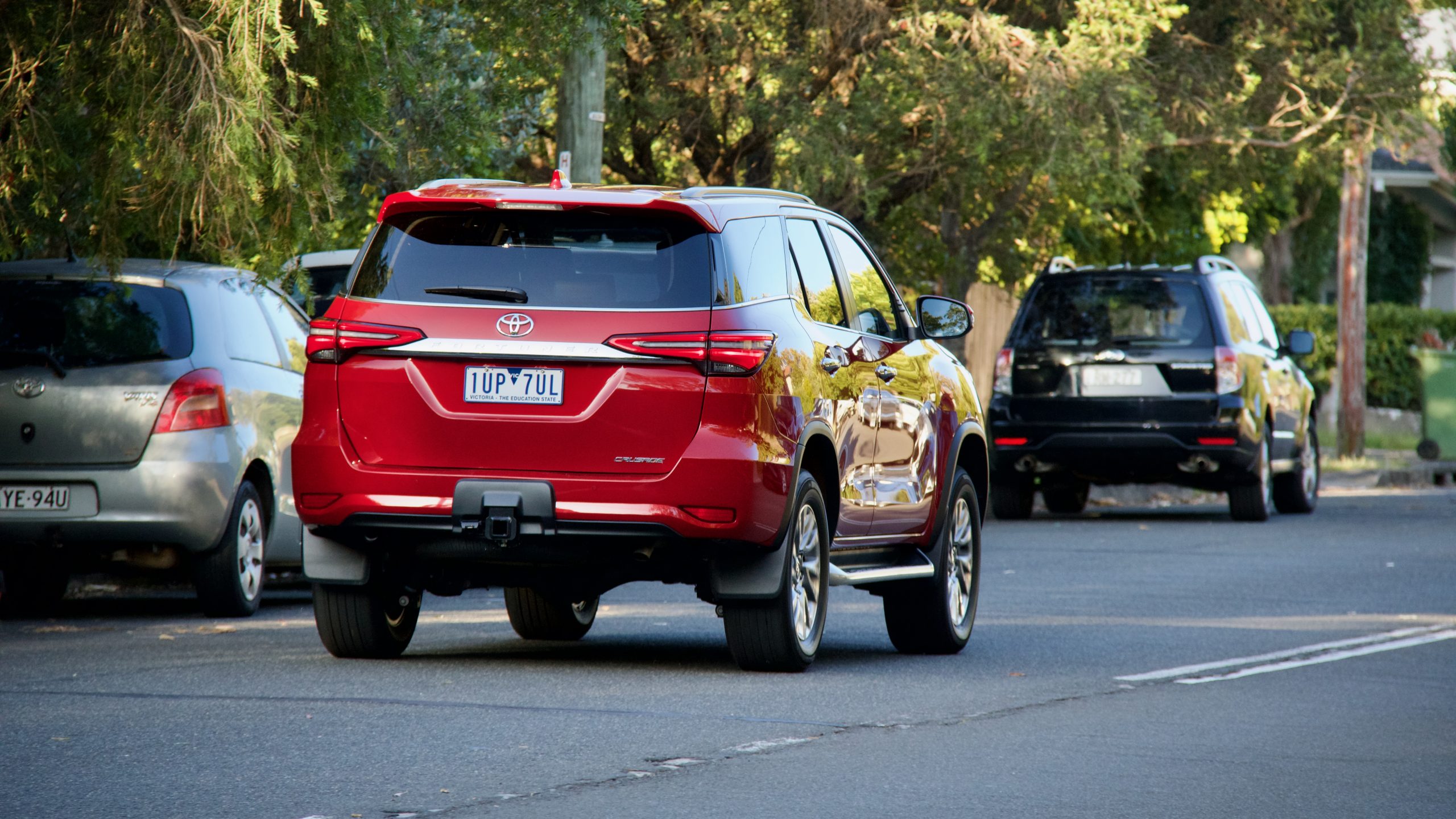
We can’t help but think given the huge popularity of utes in Australia, that Toyota should have the HiLux, and thus the Fortuner on a shorter development cycle – both cars probably have at least another two years on the market before an all new model arrives, assuming the expected ten year model cycle for the current HiLux. 10 years is a long time in car years, and with buyers expecting more and and more from their utes and ute-based SUVs, it’s just too long.
In the short term, Toyota could improve the Fortuner by dropping the price and adding a lot more equipment. As it stands, besides the drivetrain, we can’t see a reason to purchase a Fortuner Crusade over an Isuzu MU-X 4×4 LS-T, which is a better car in almost every way, despite being cheaper, and that’s not to mention the Everest which feels generations newer and can also be had with more equipment for not too much more.
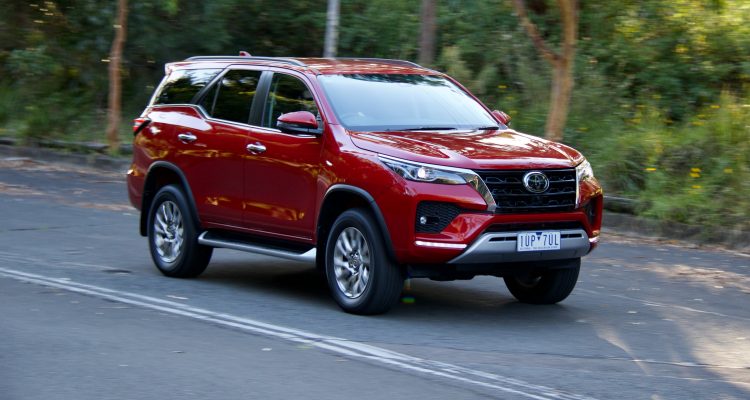
Leave a Reply